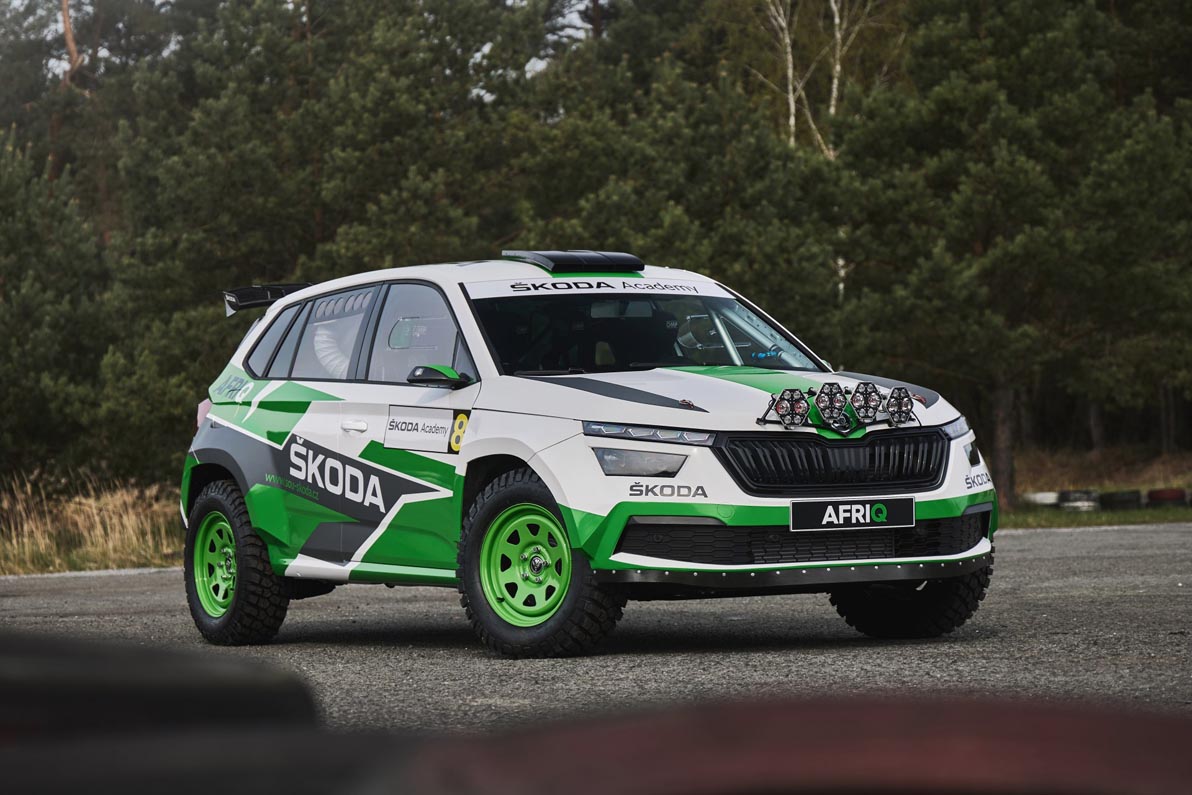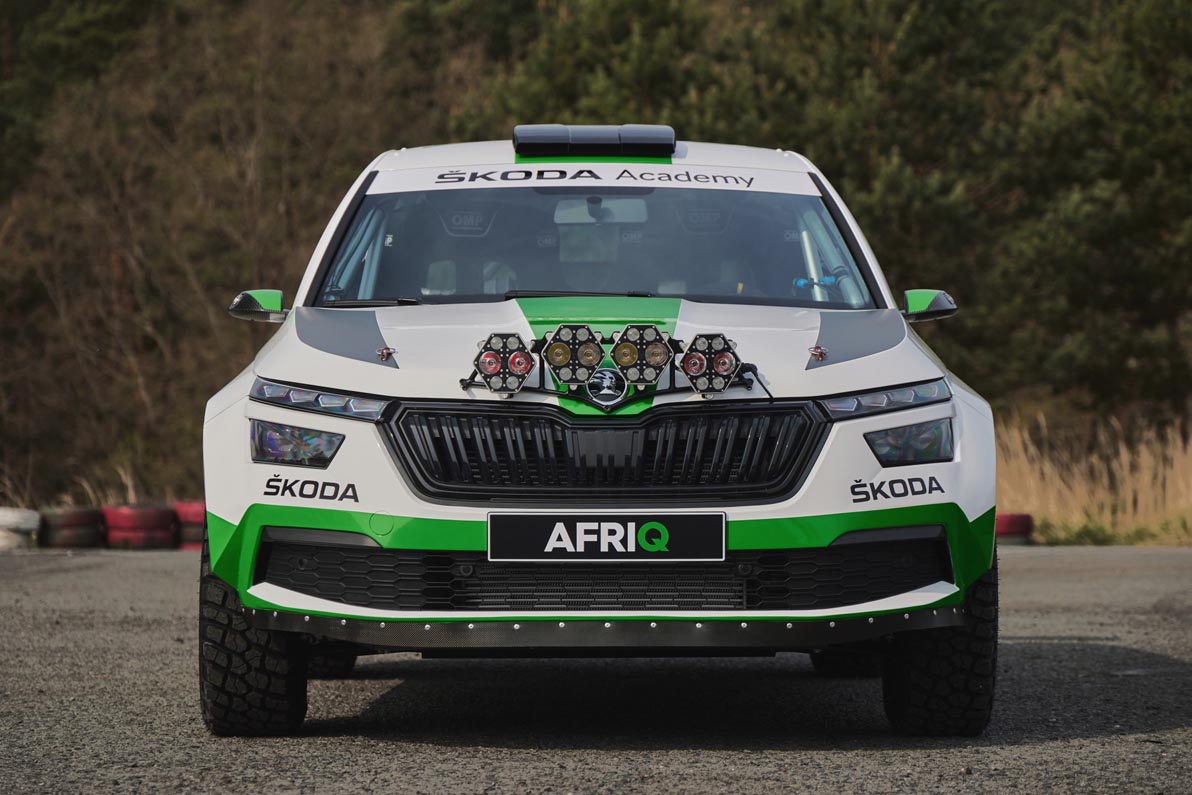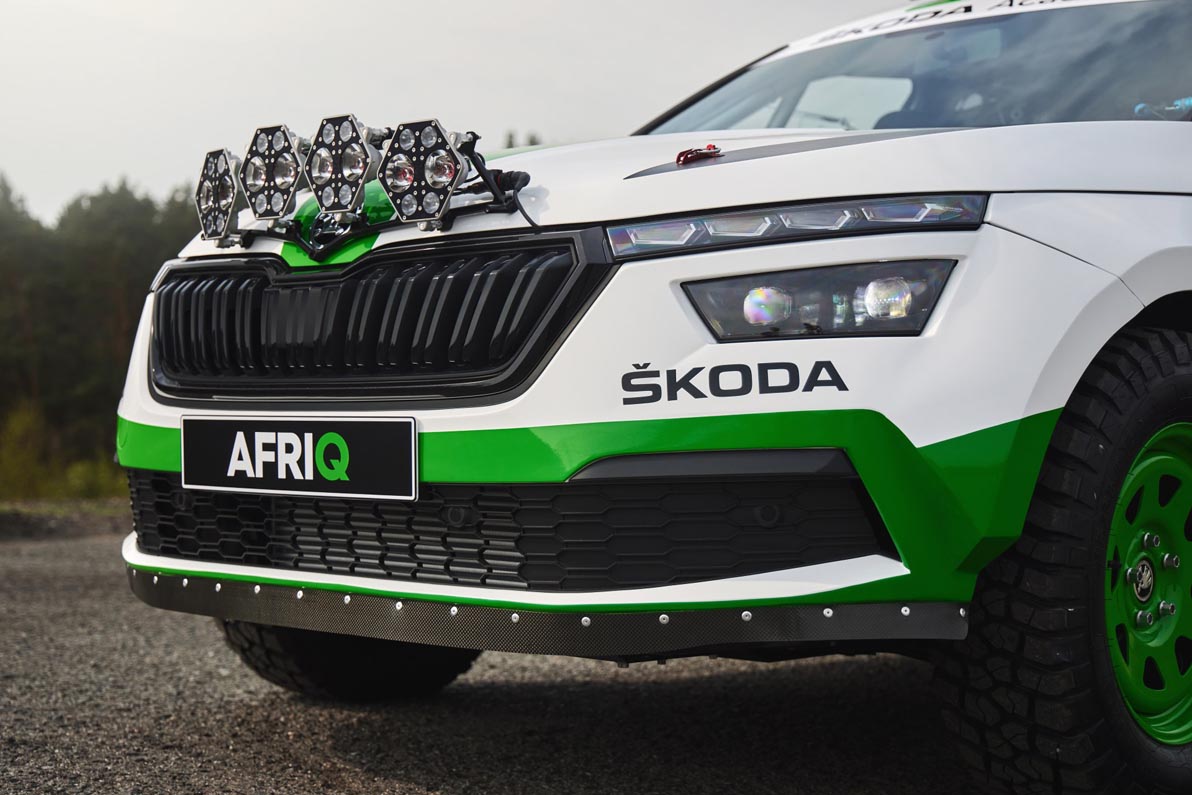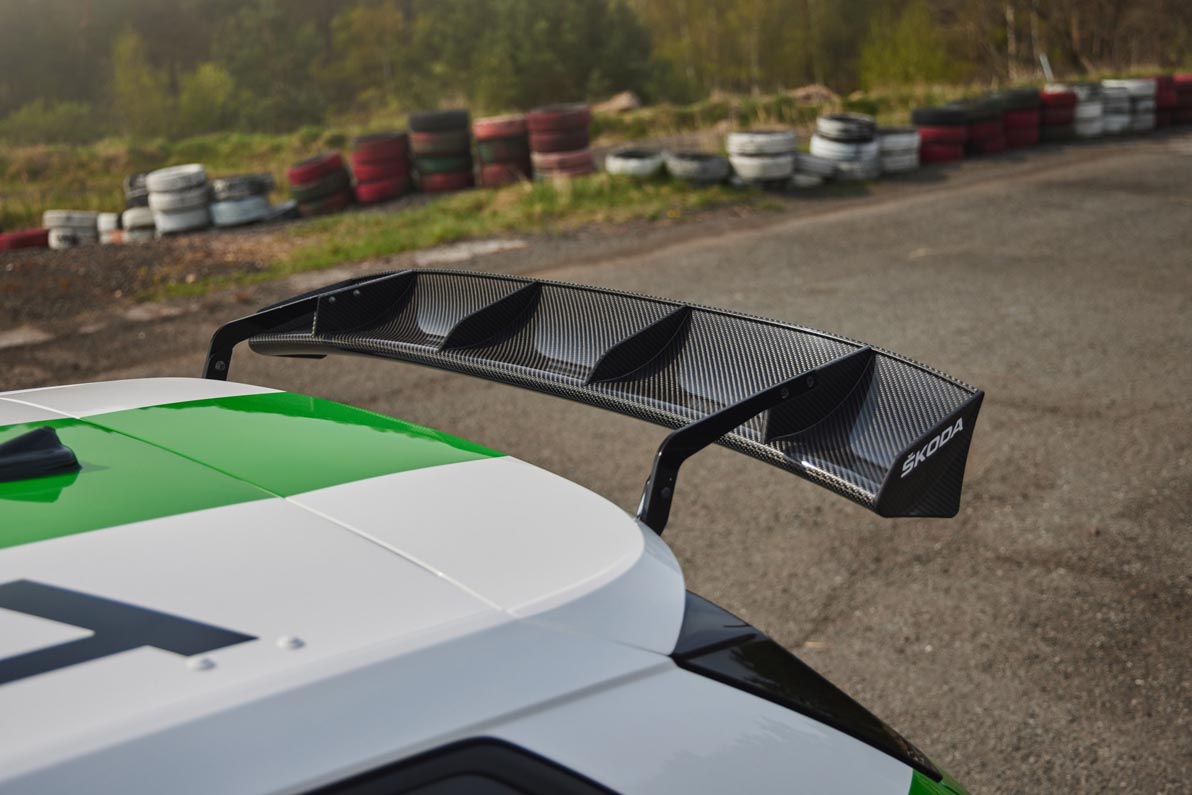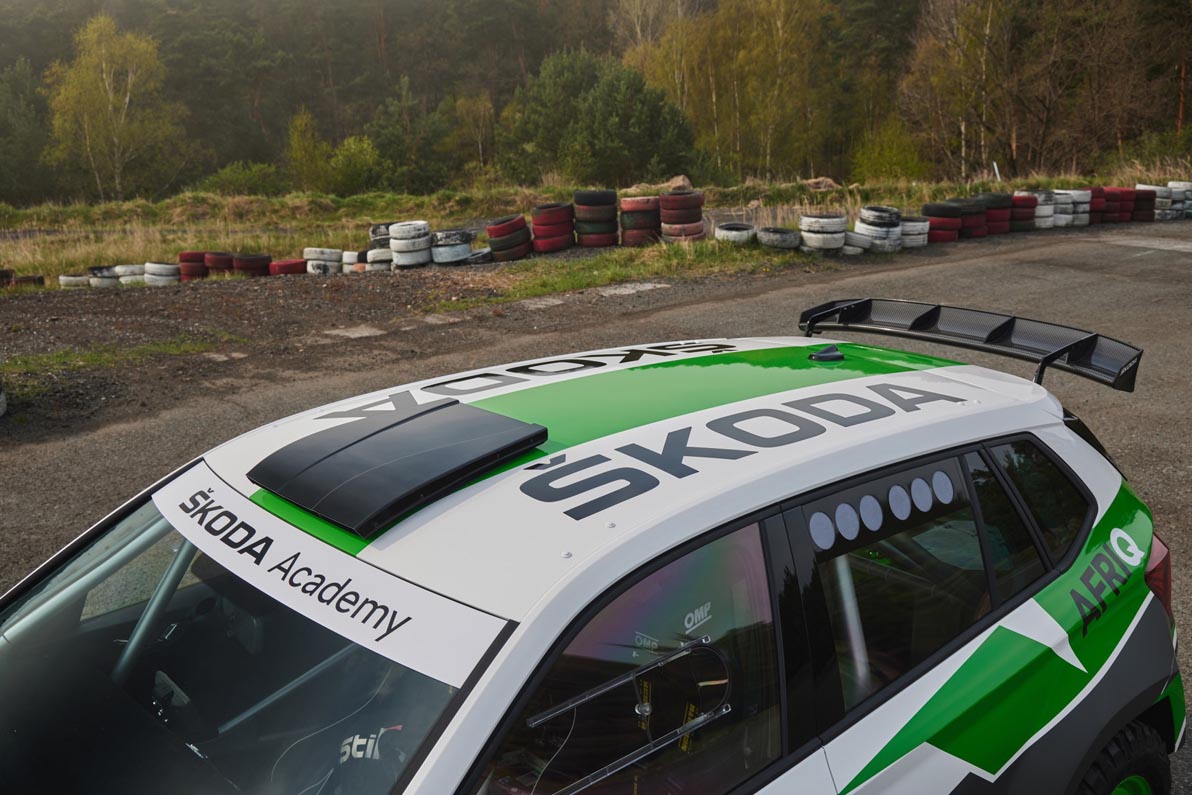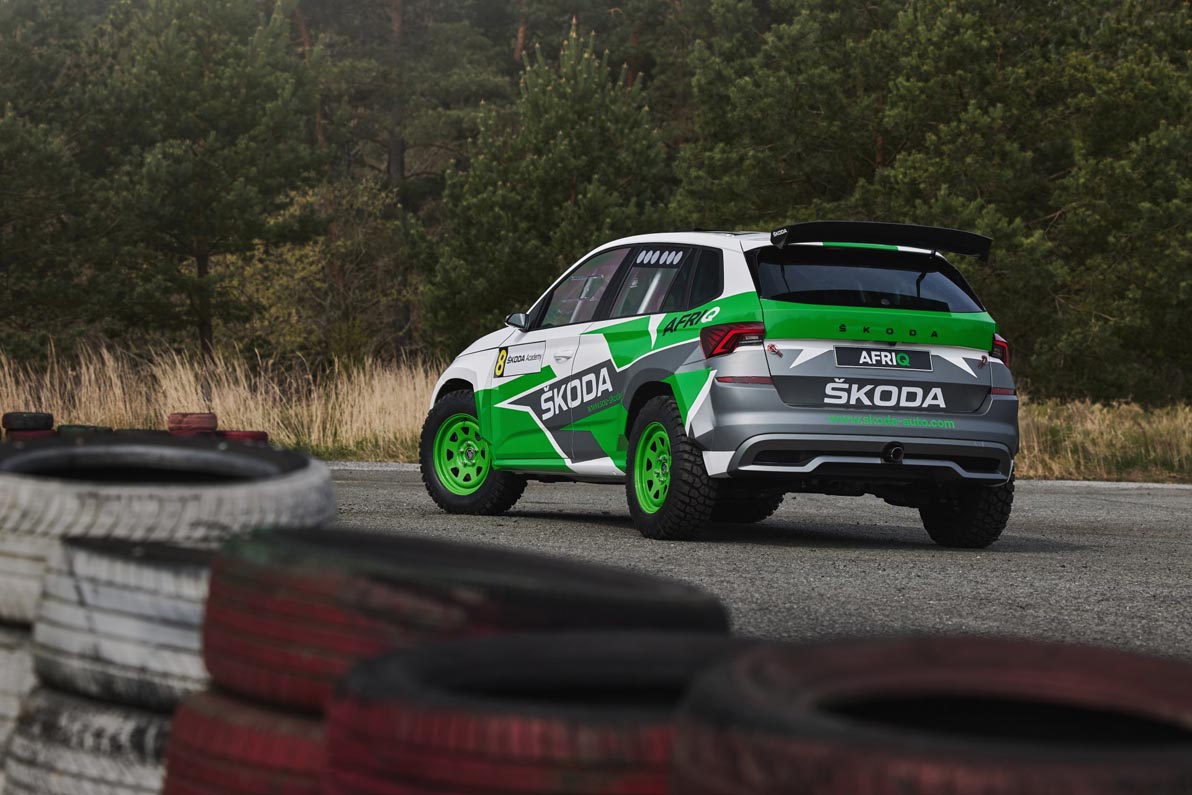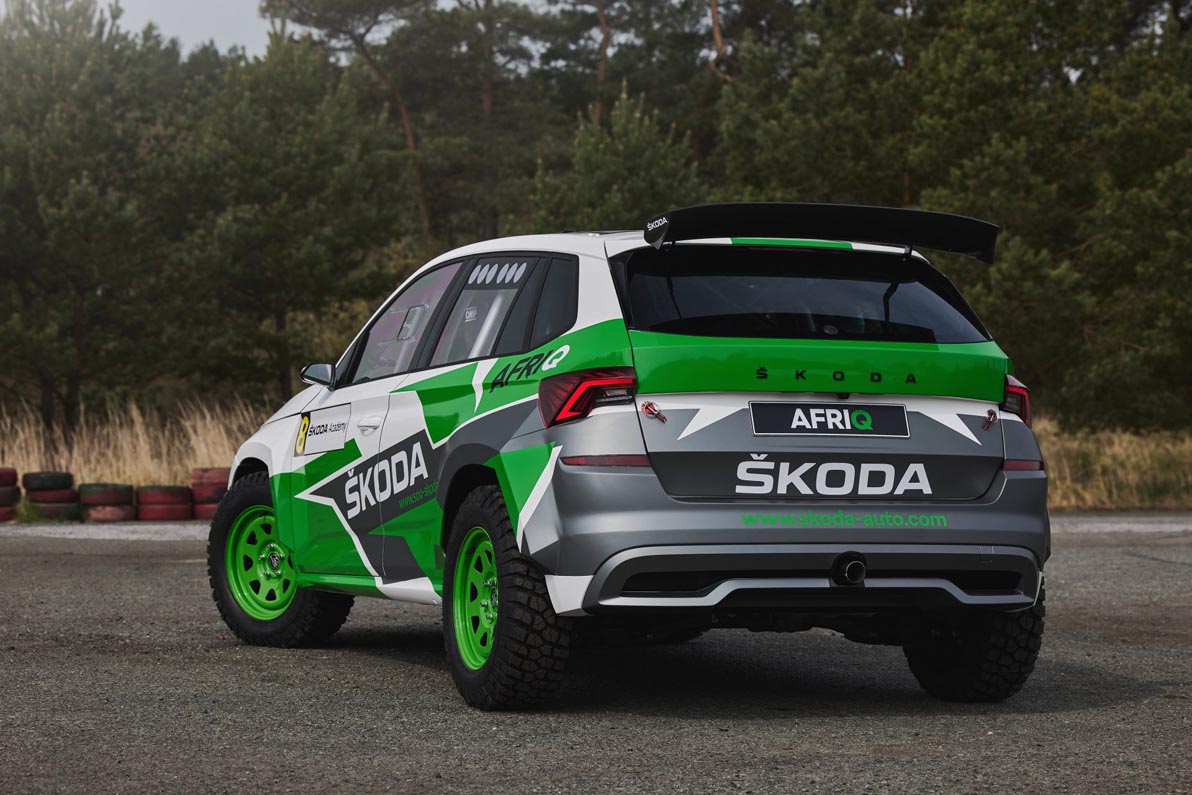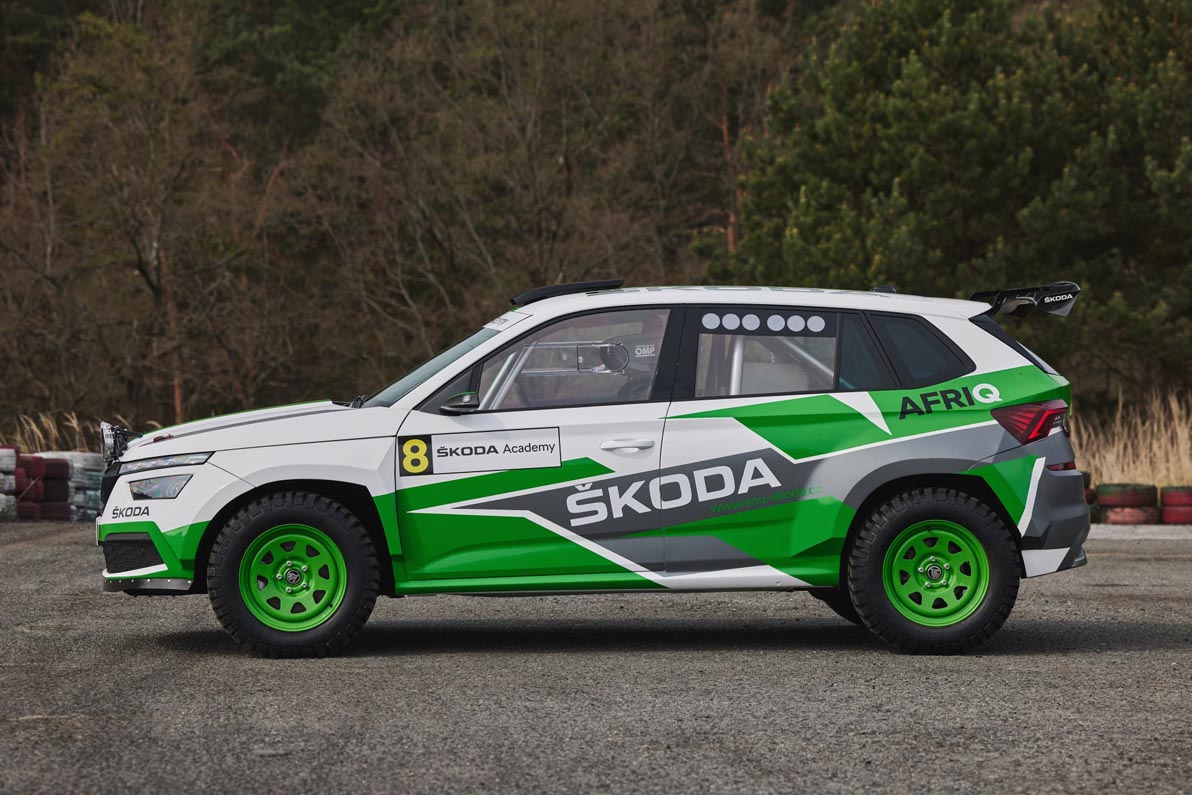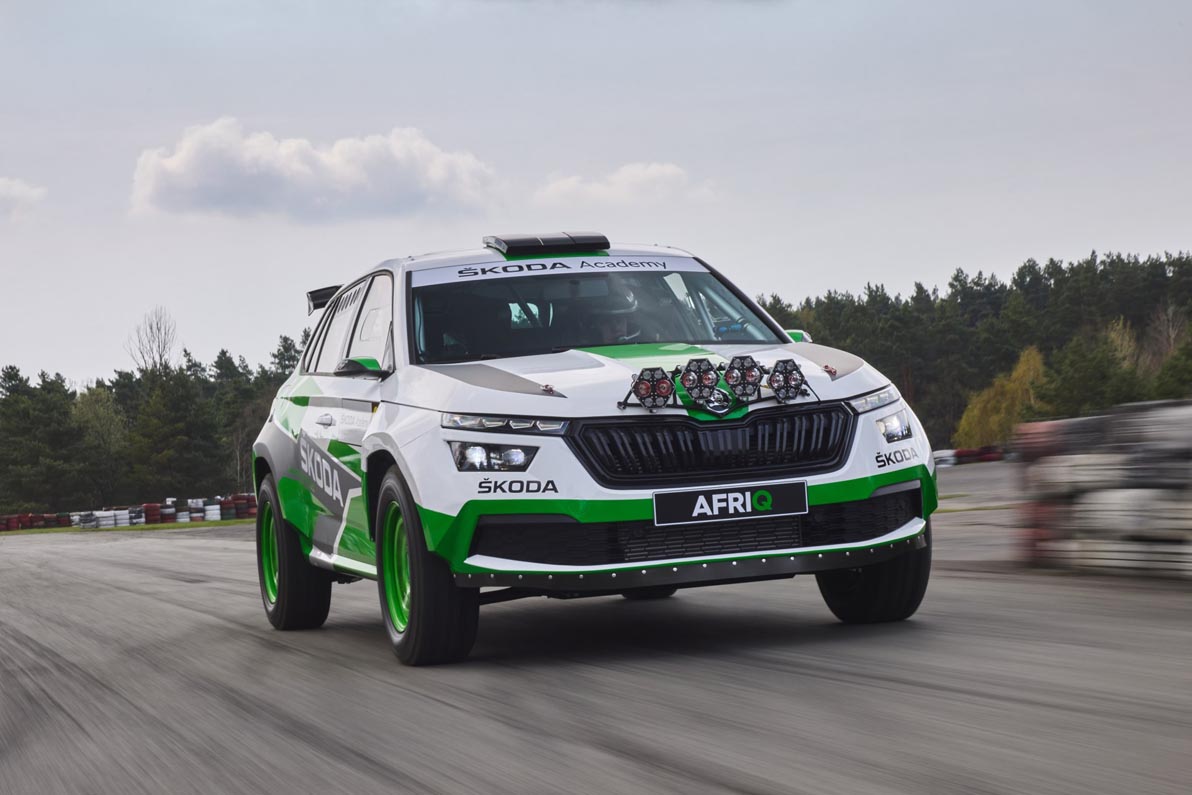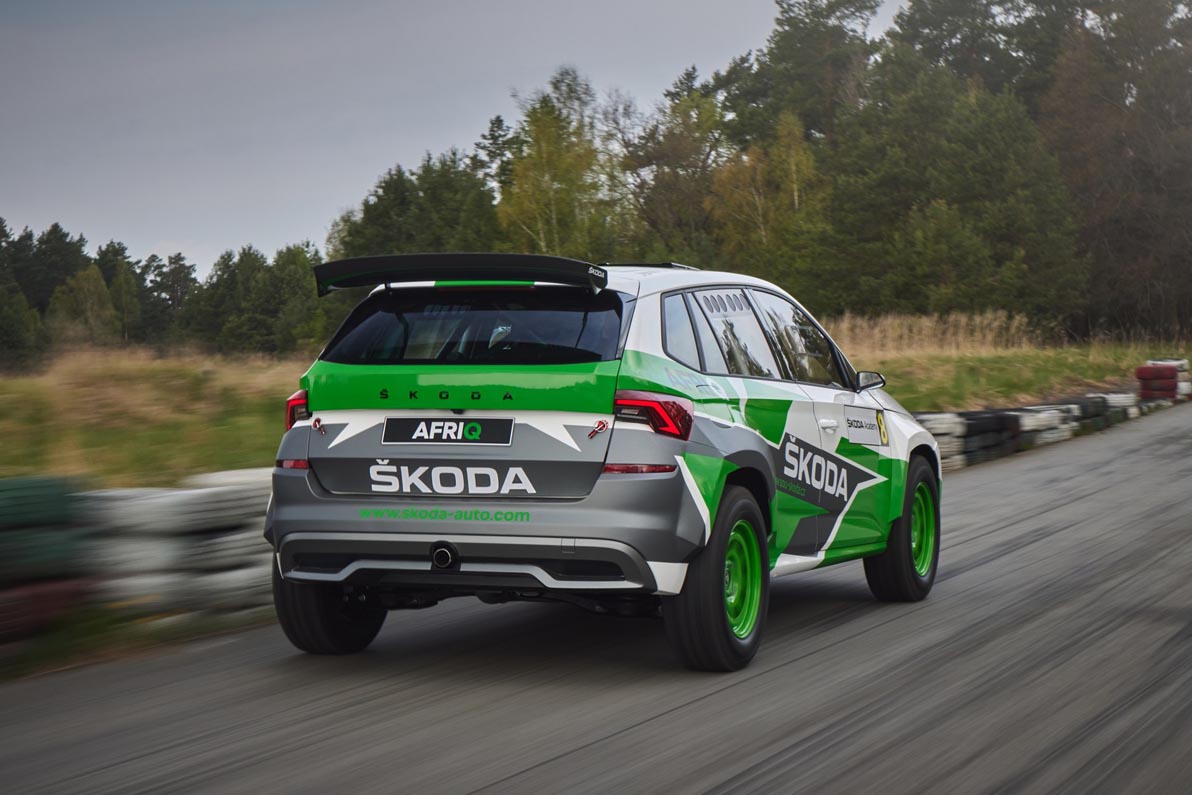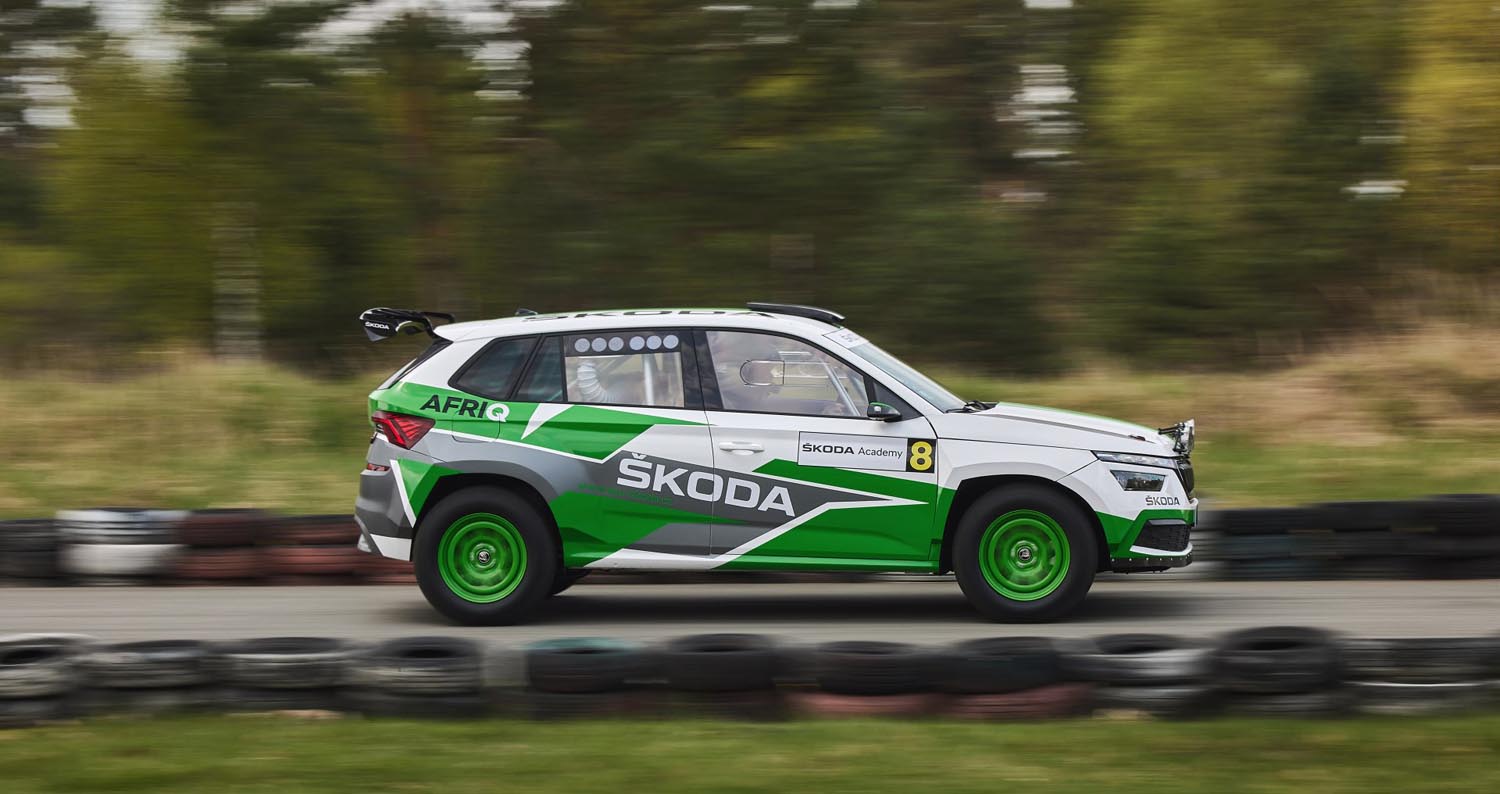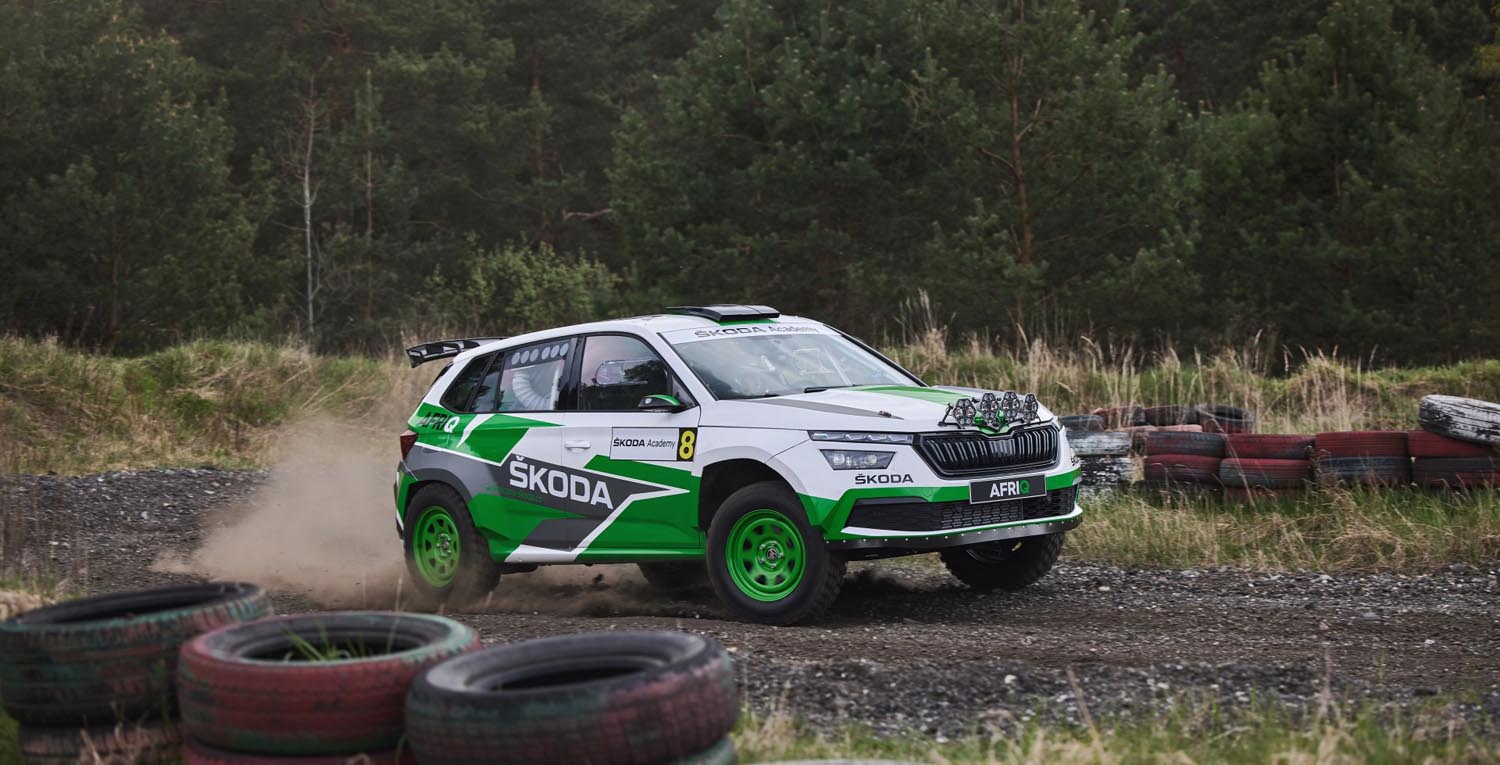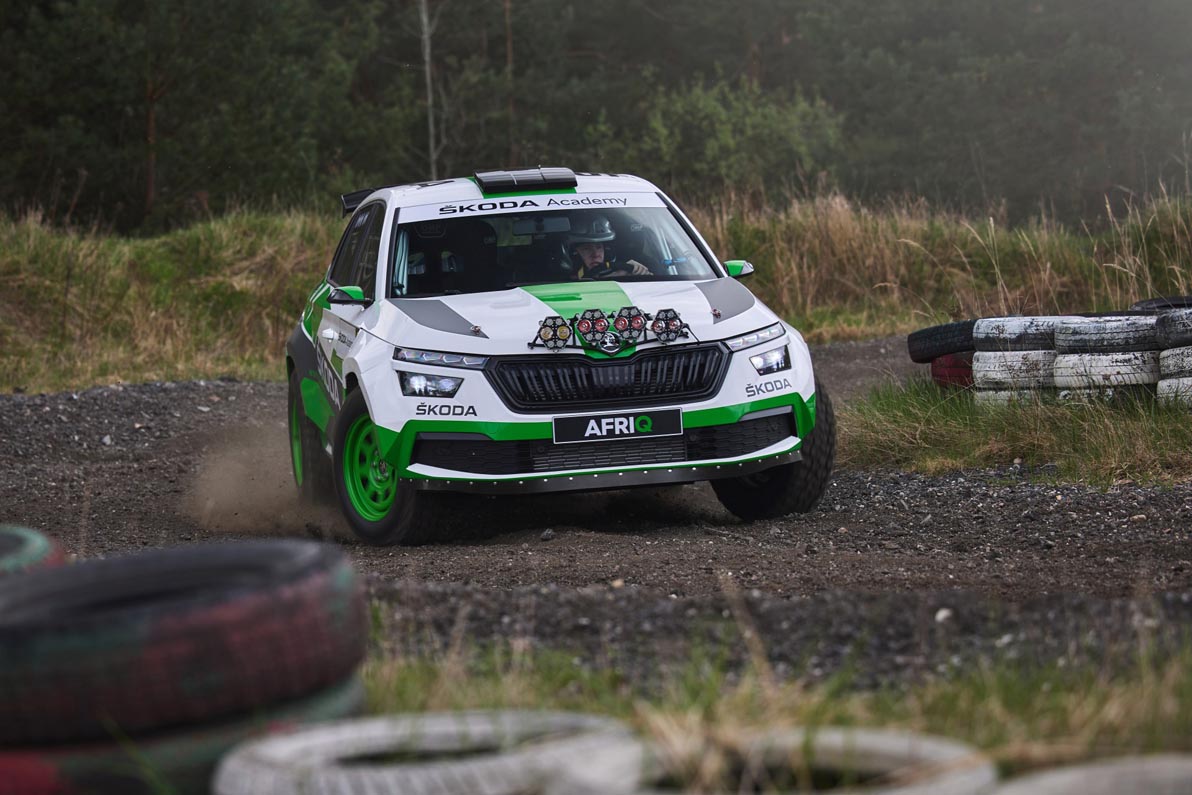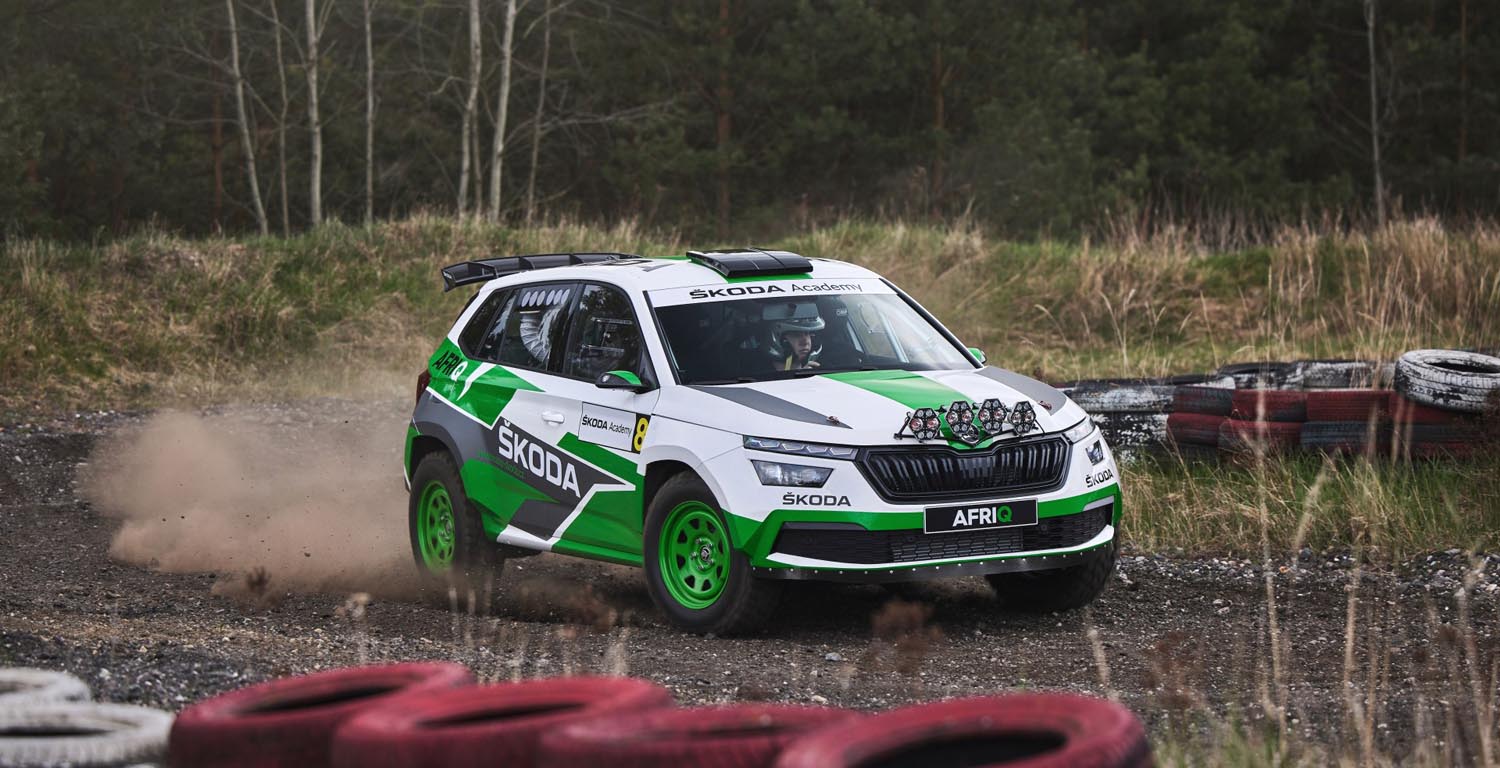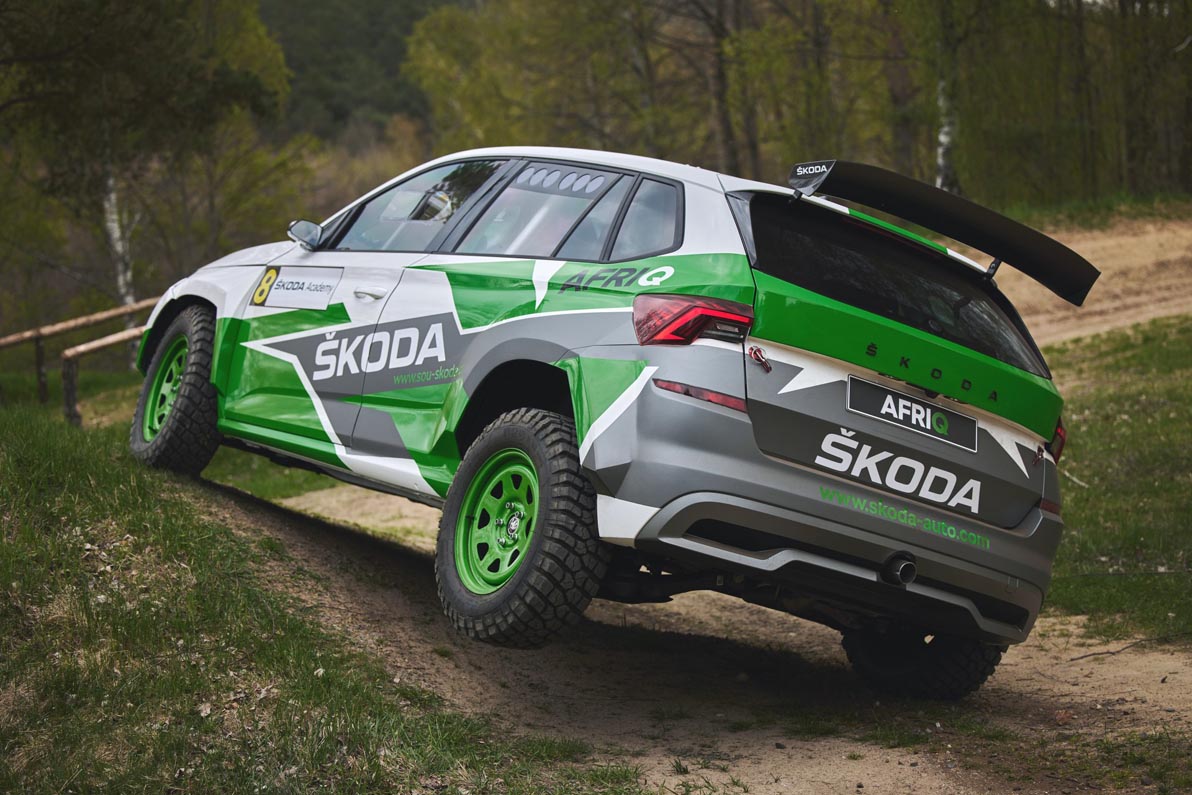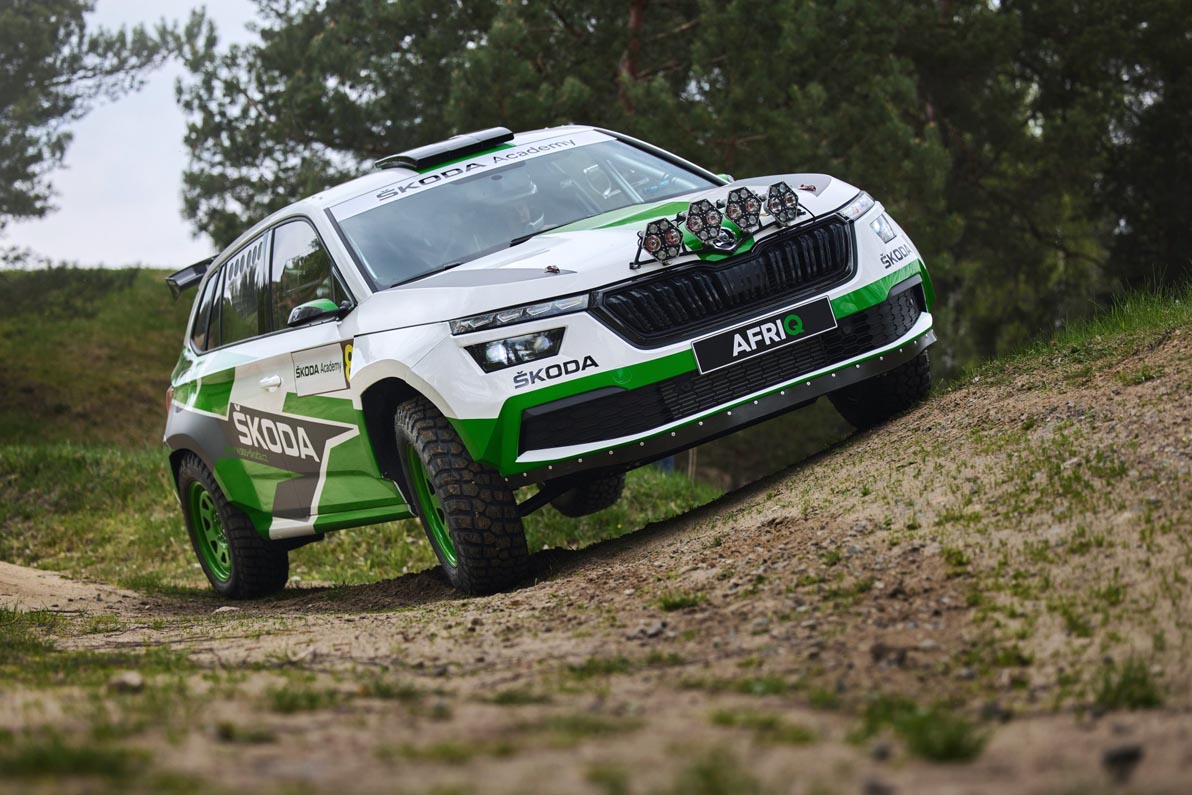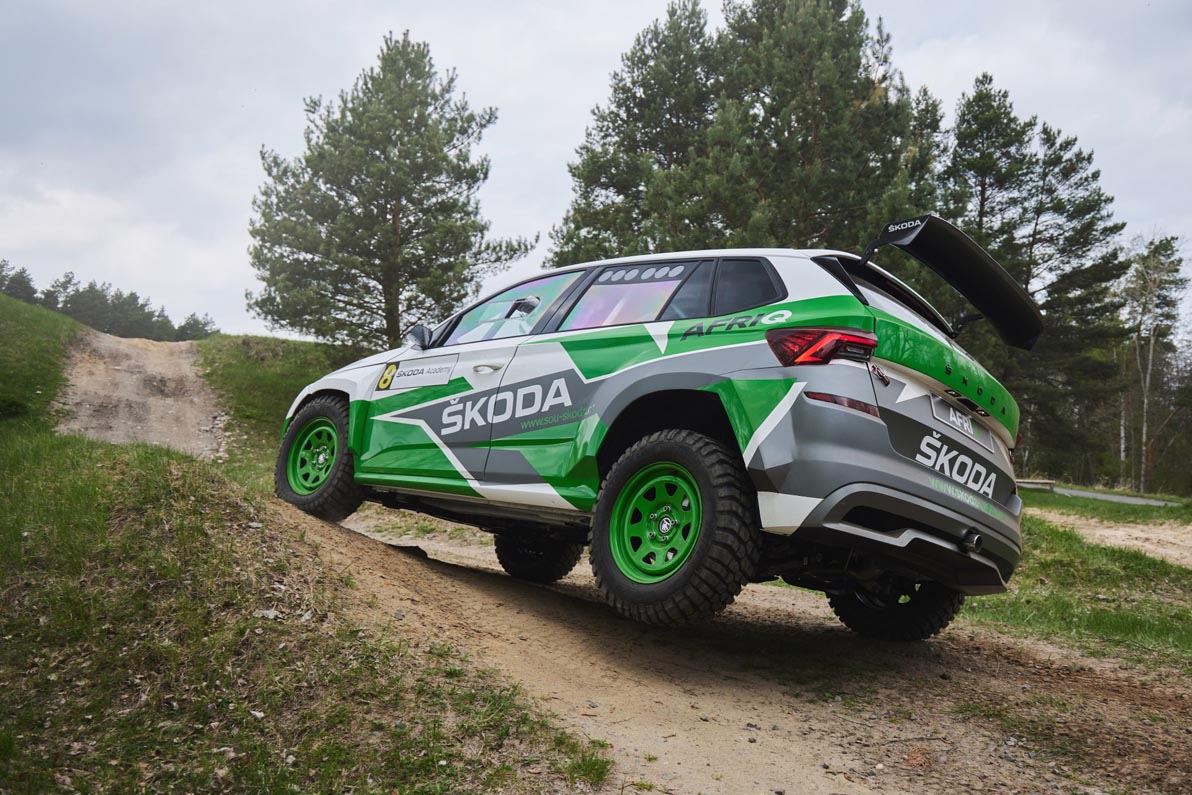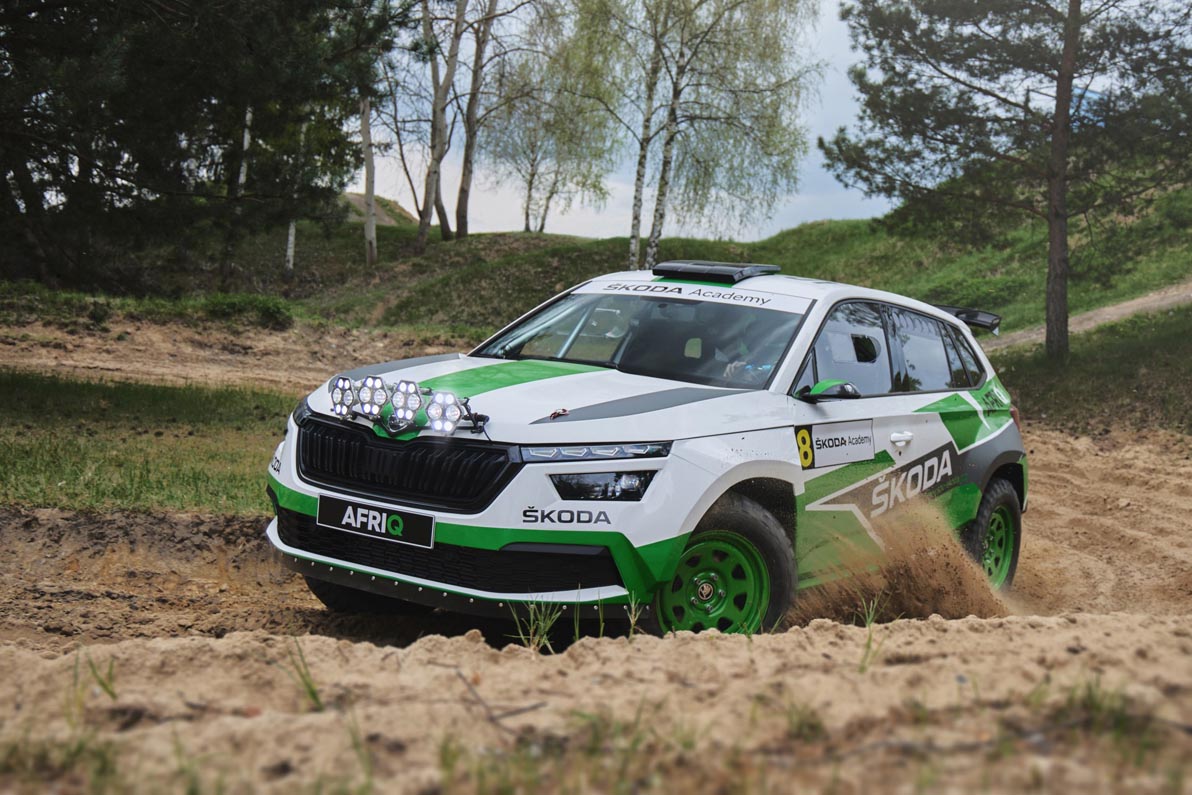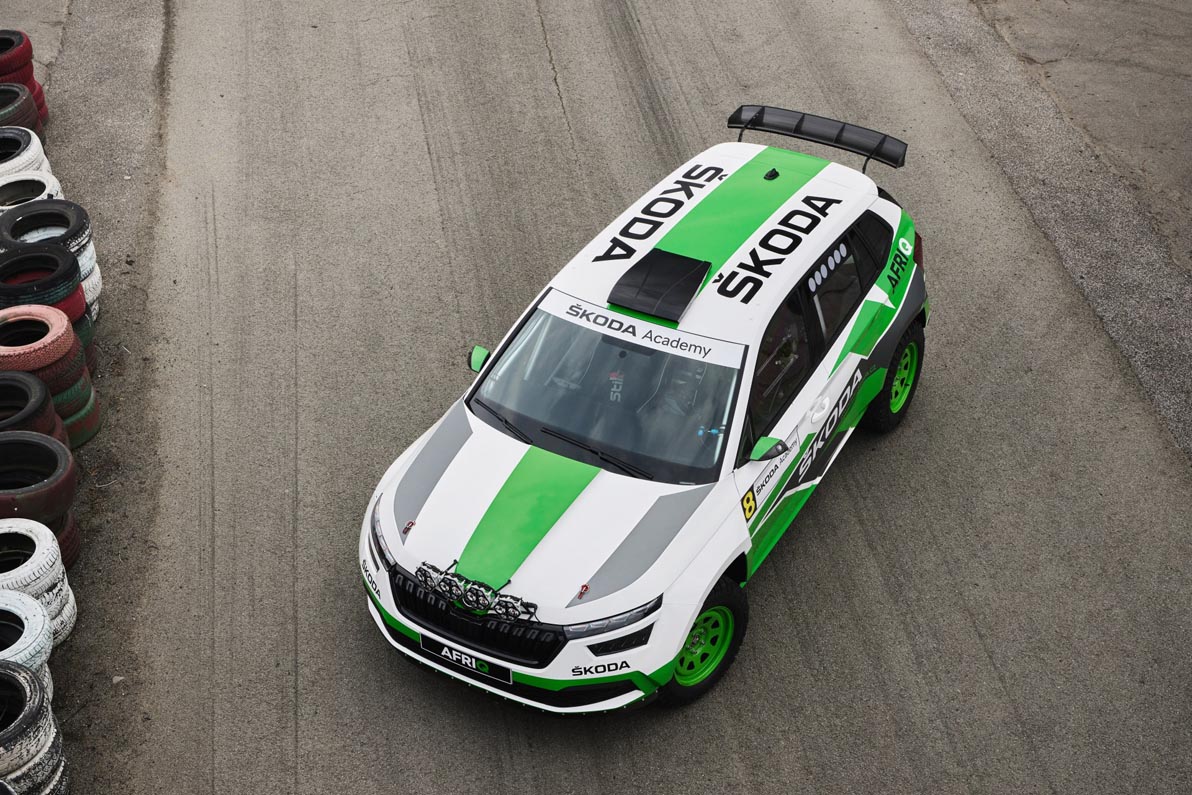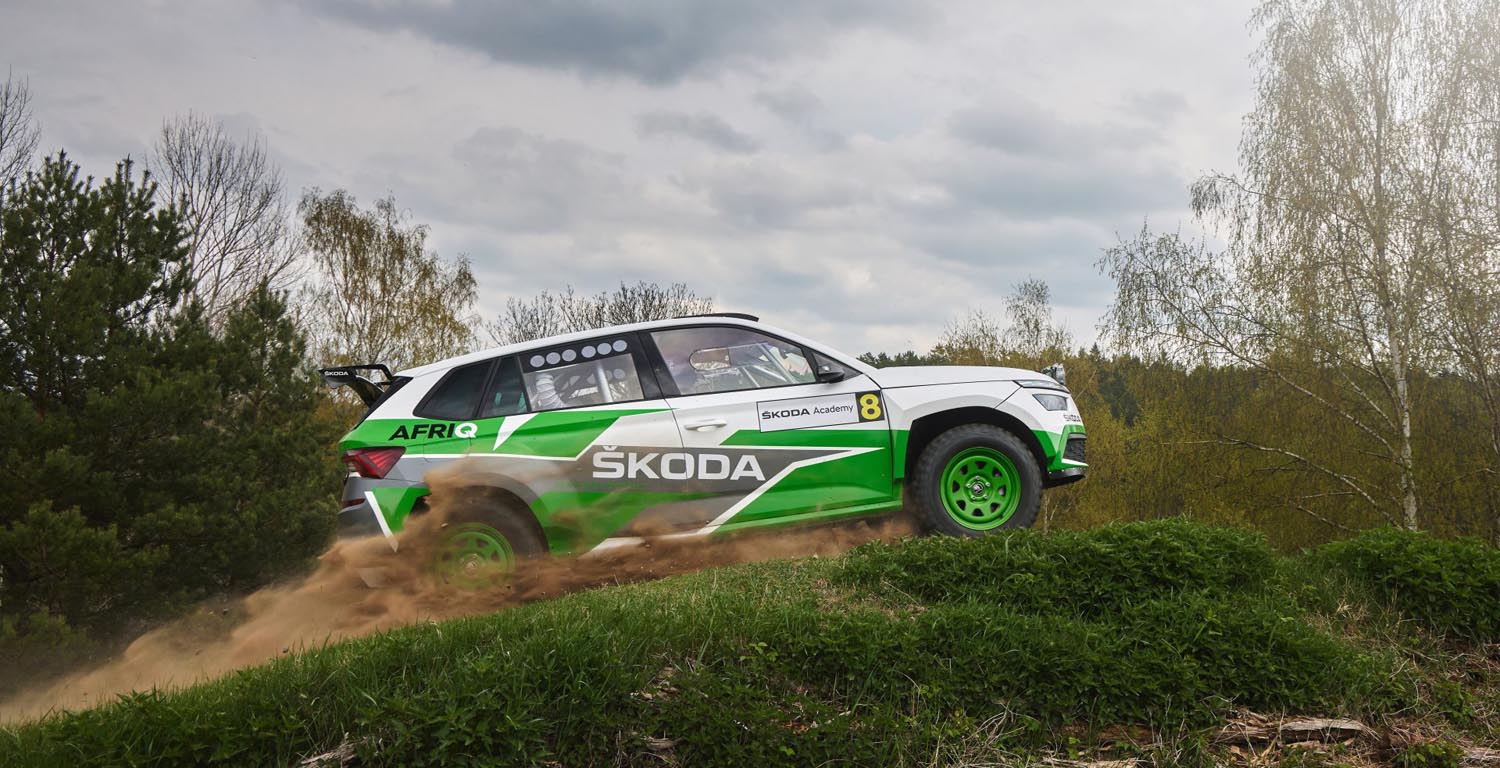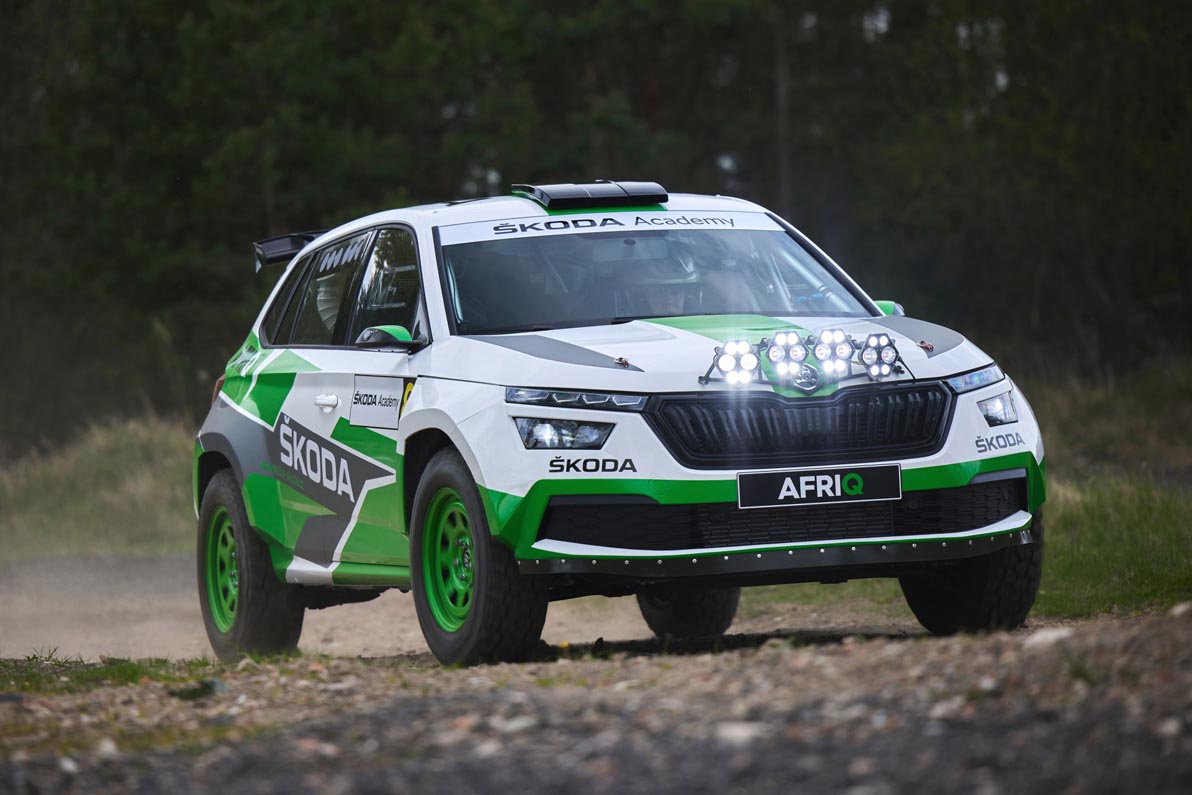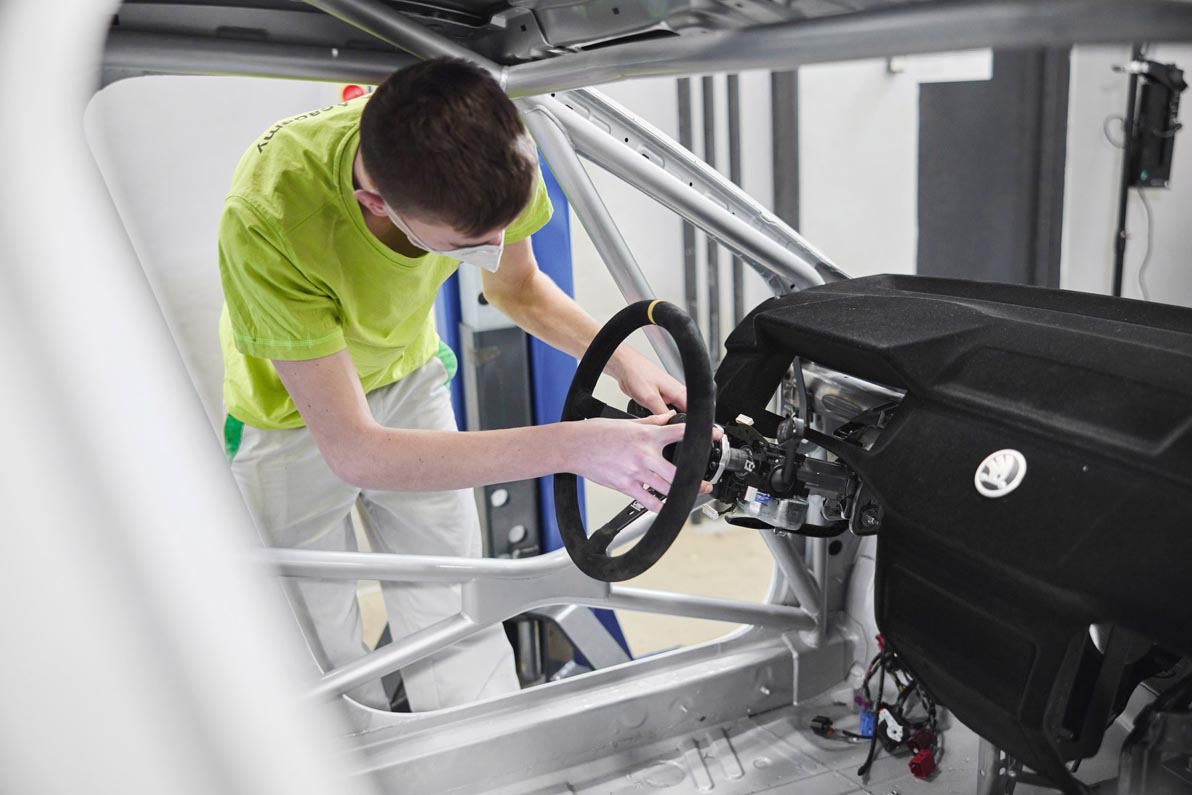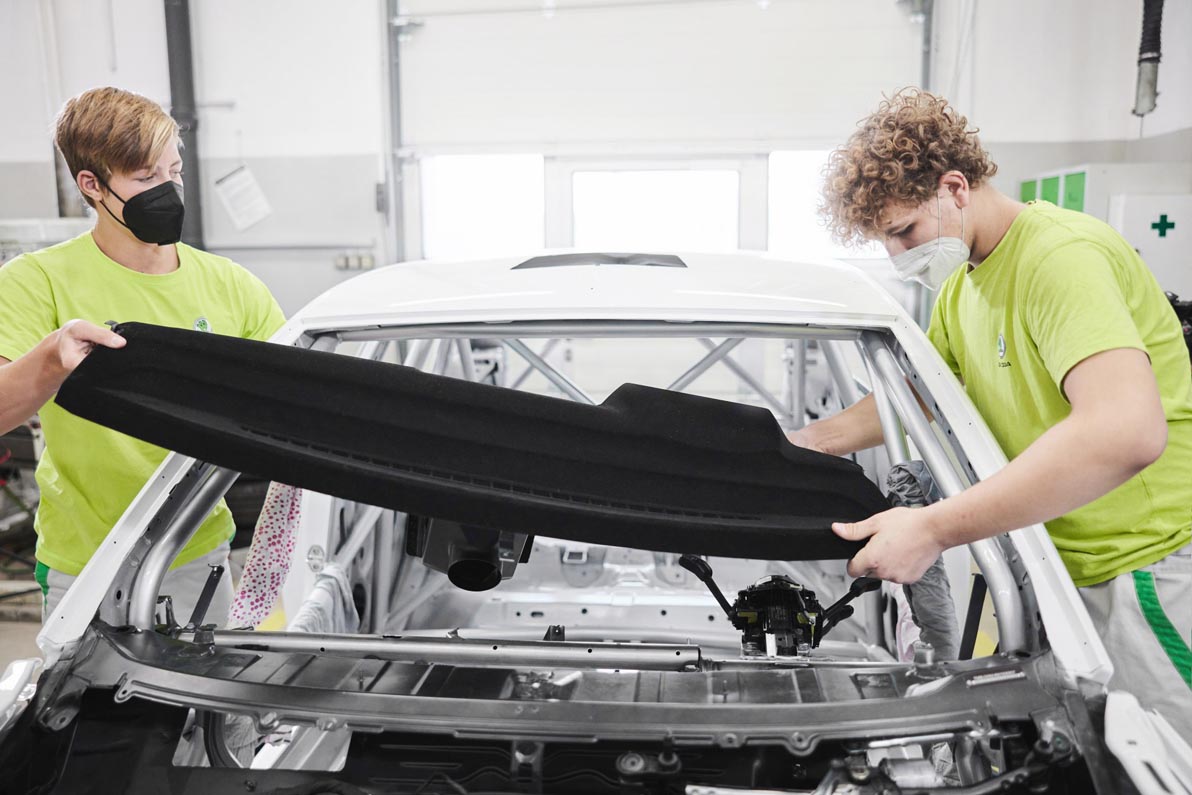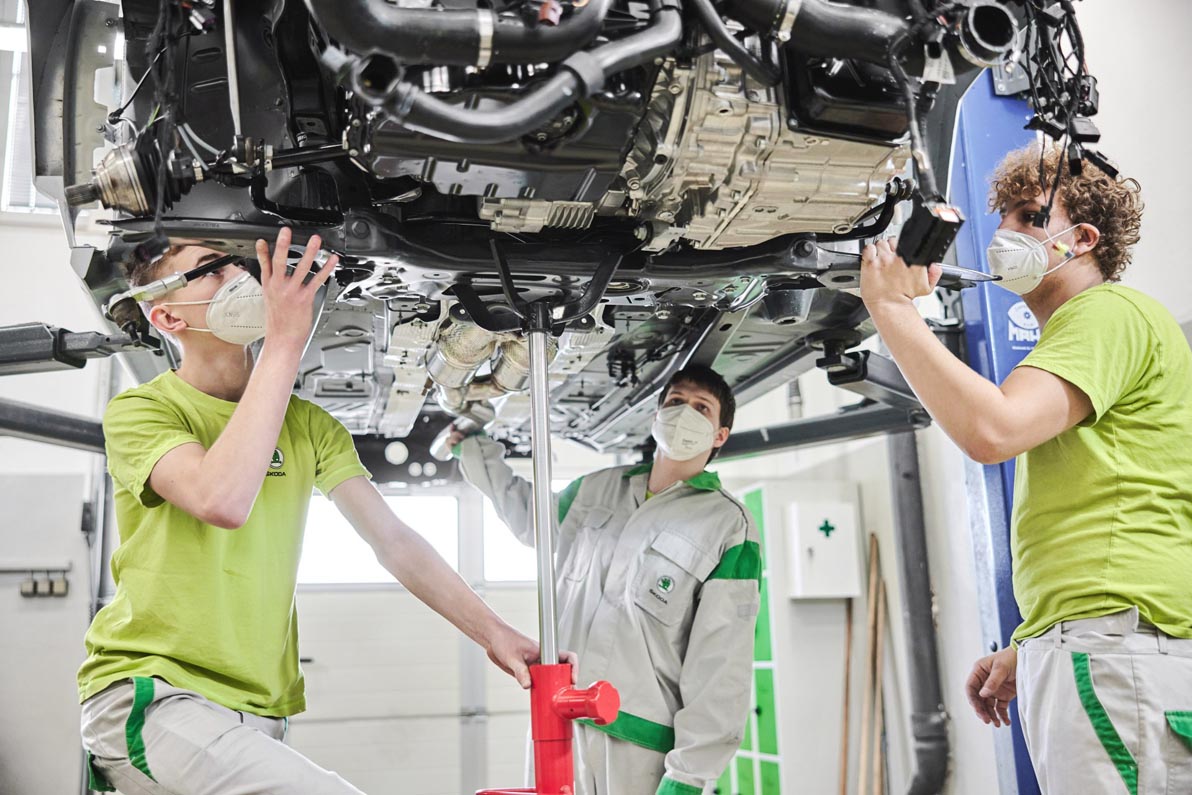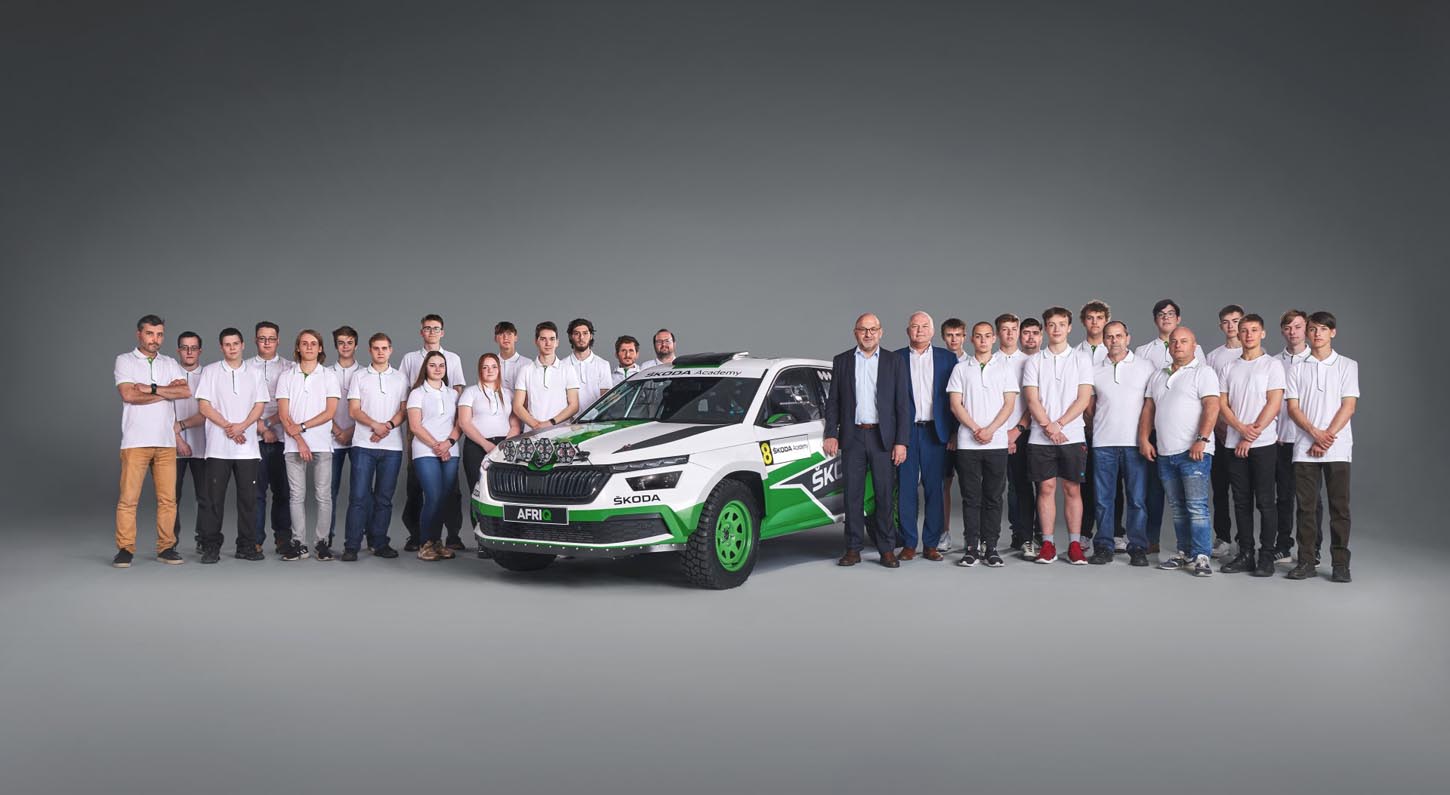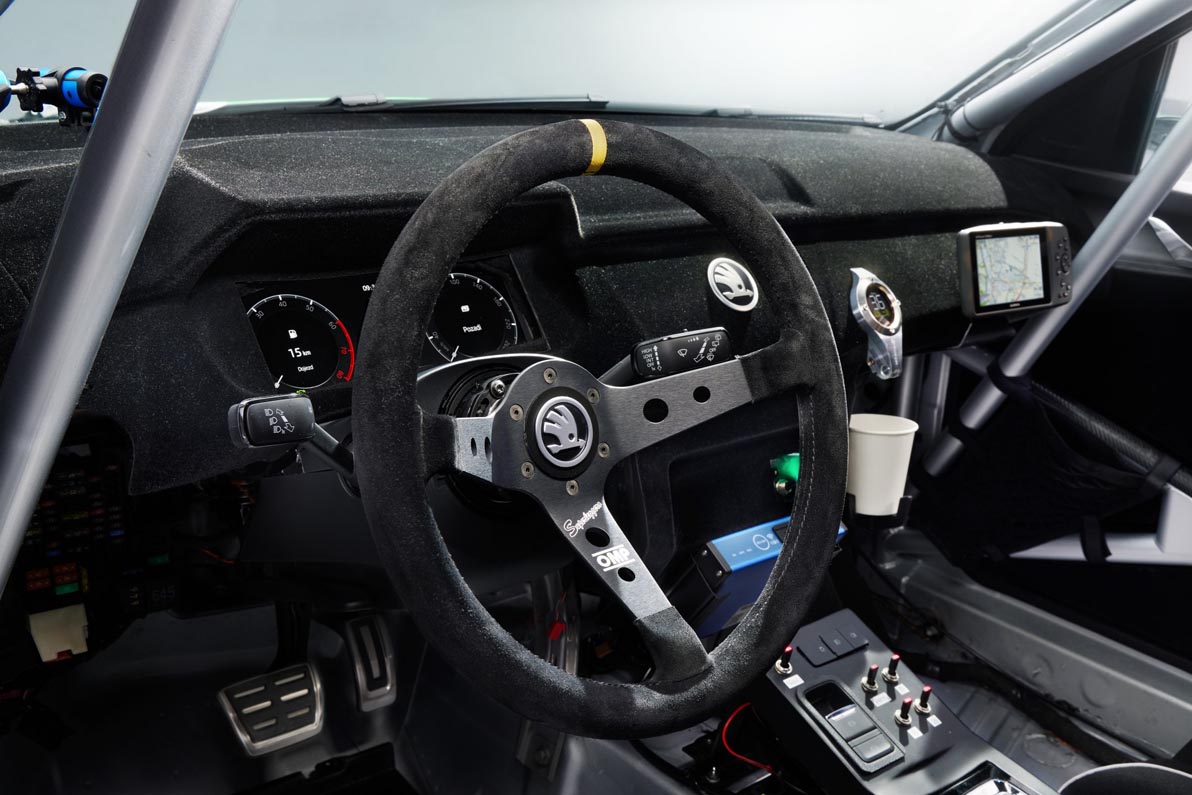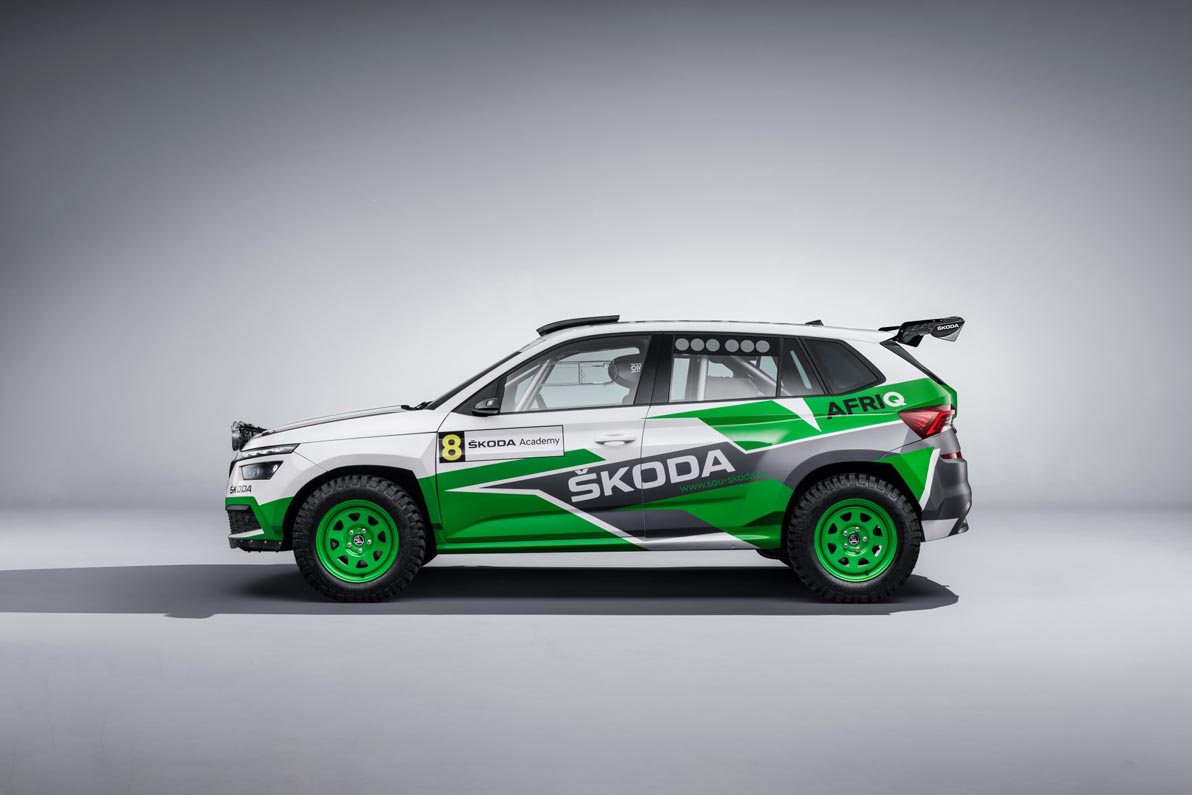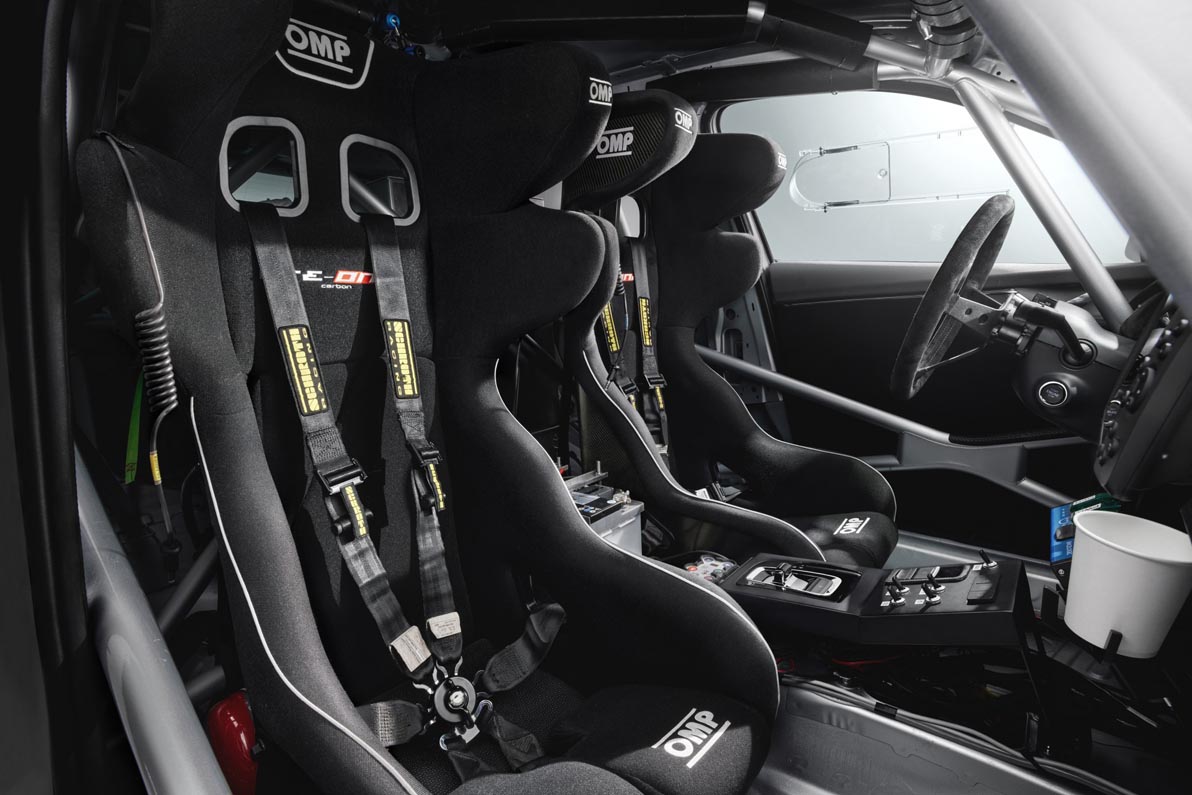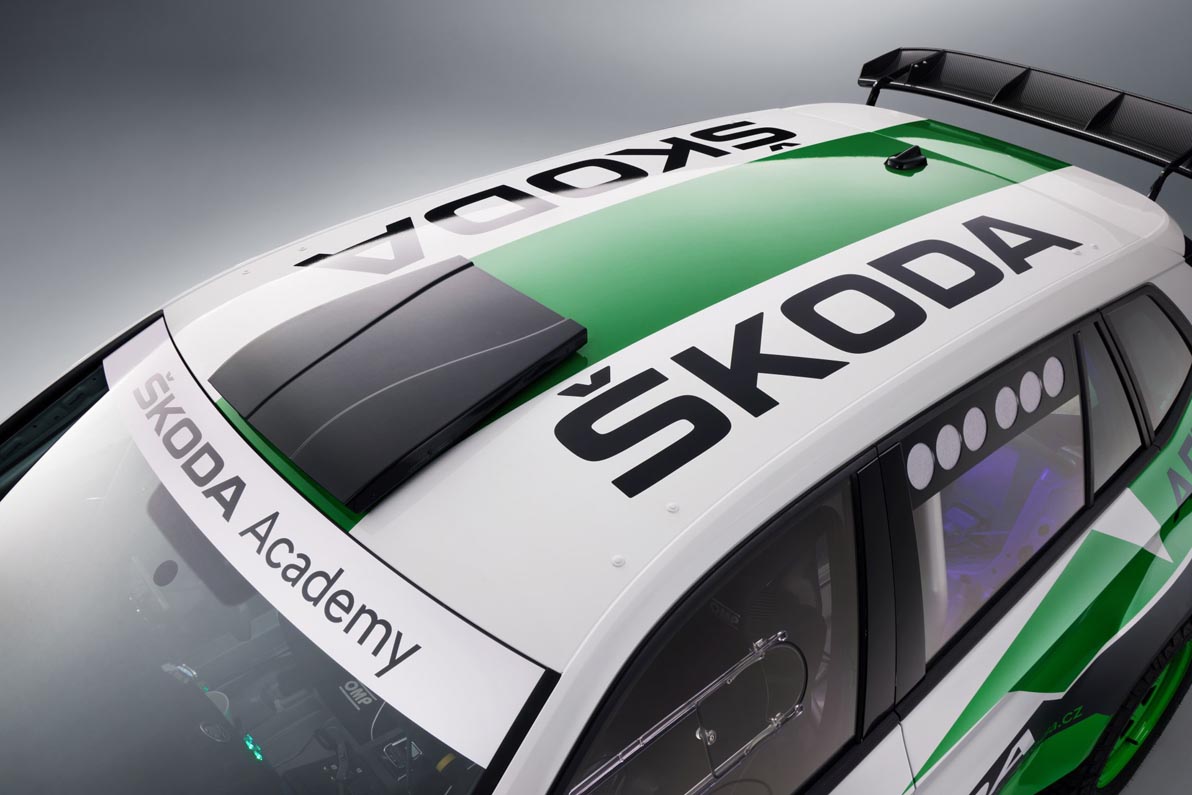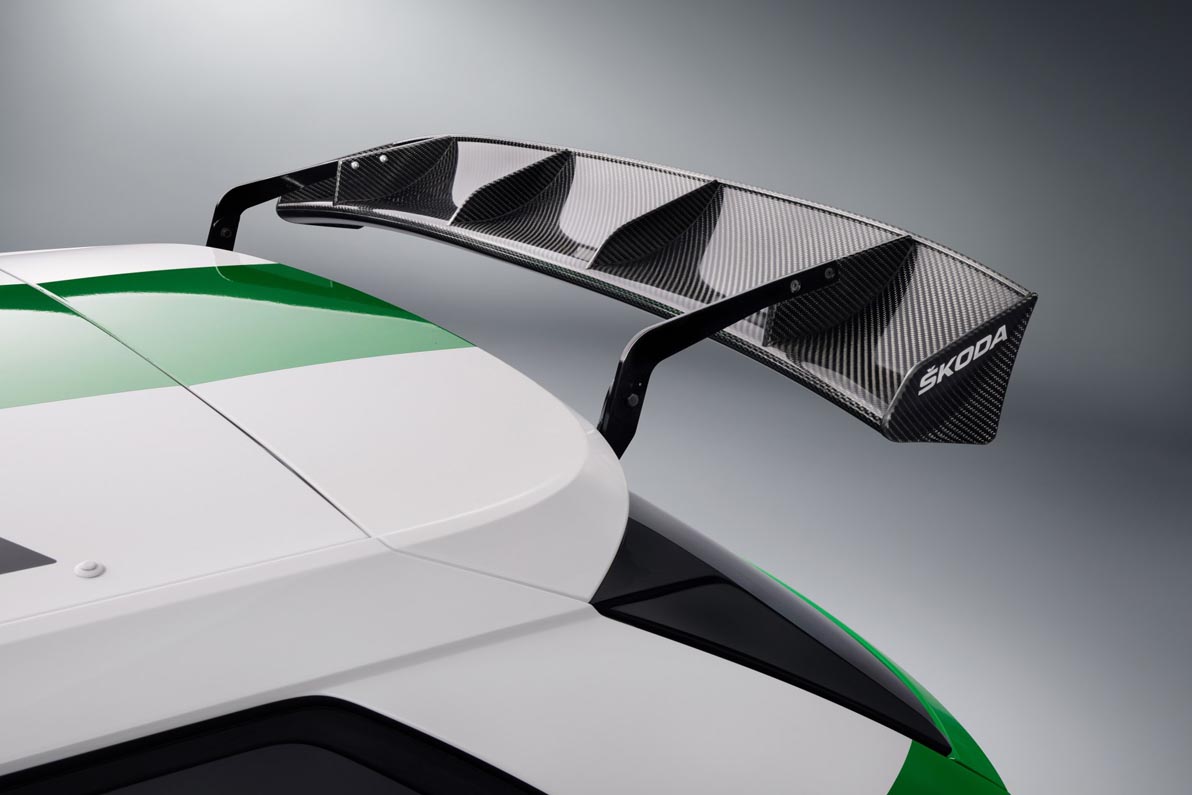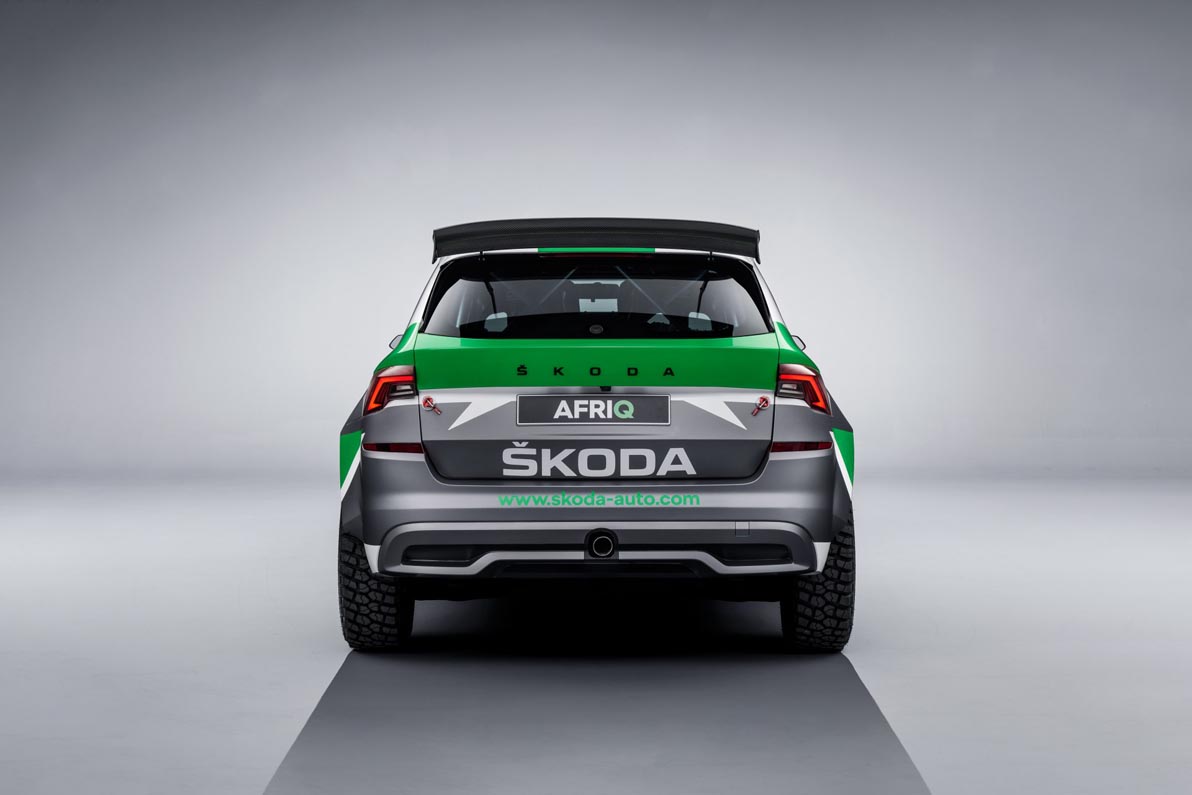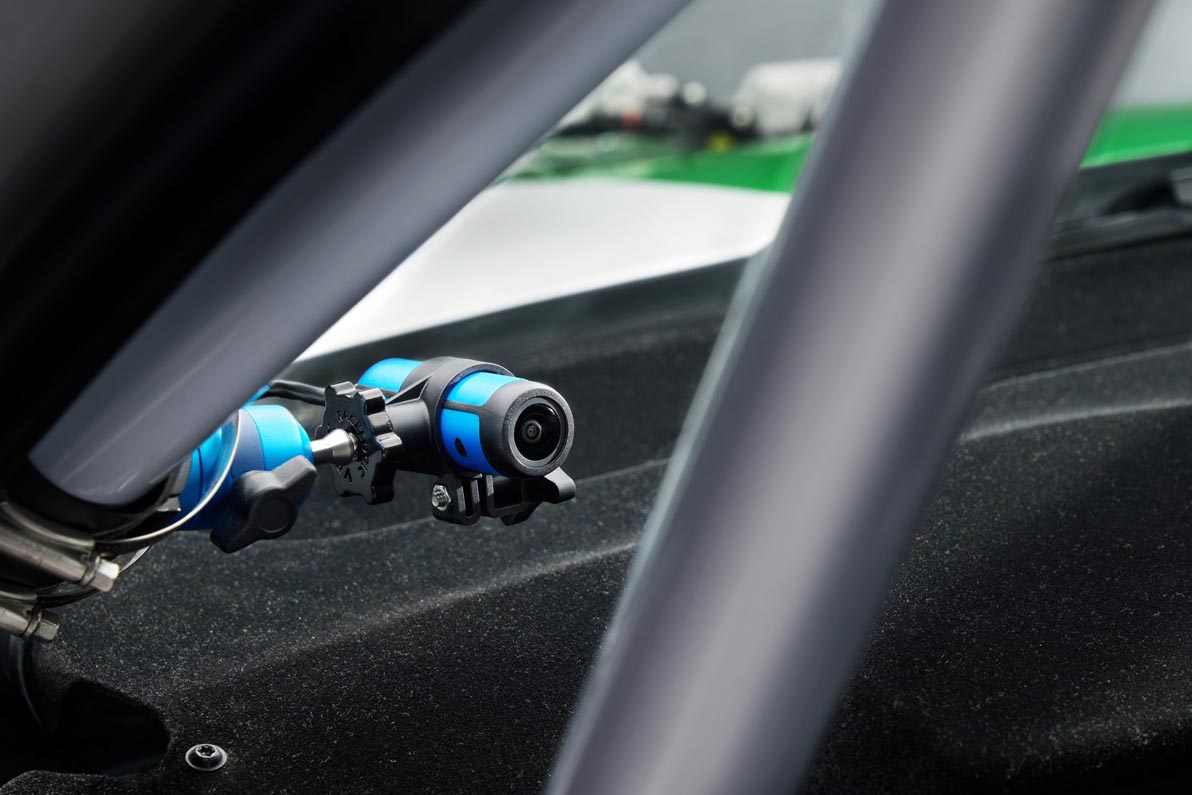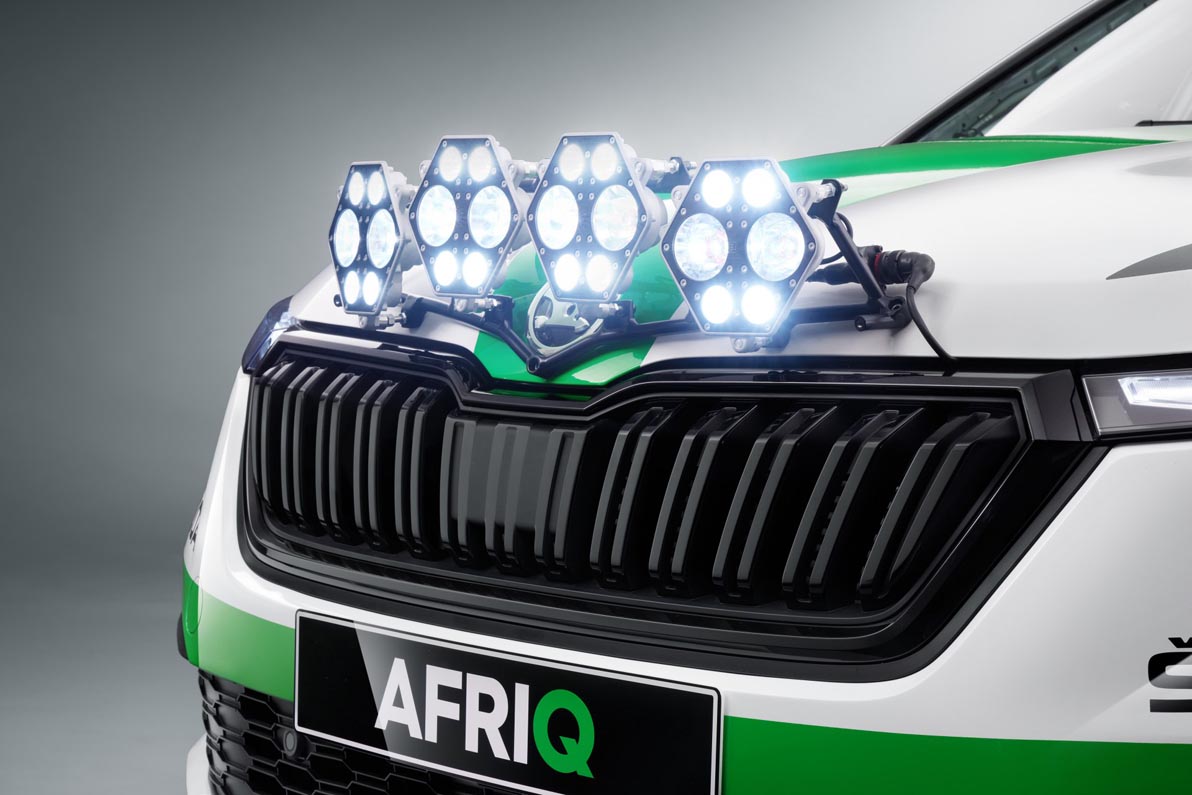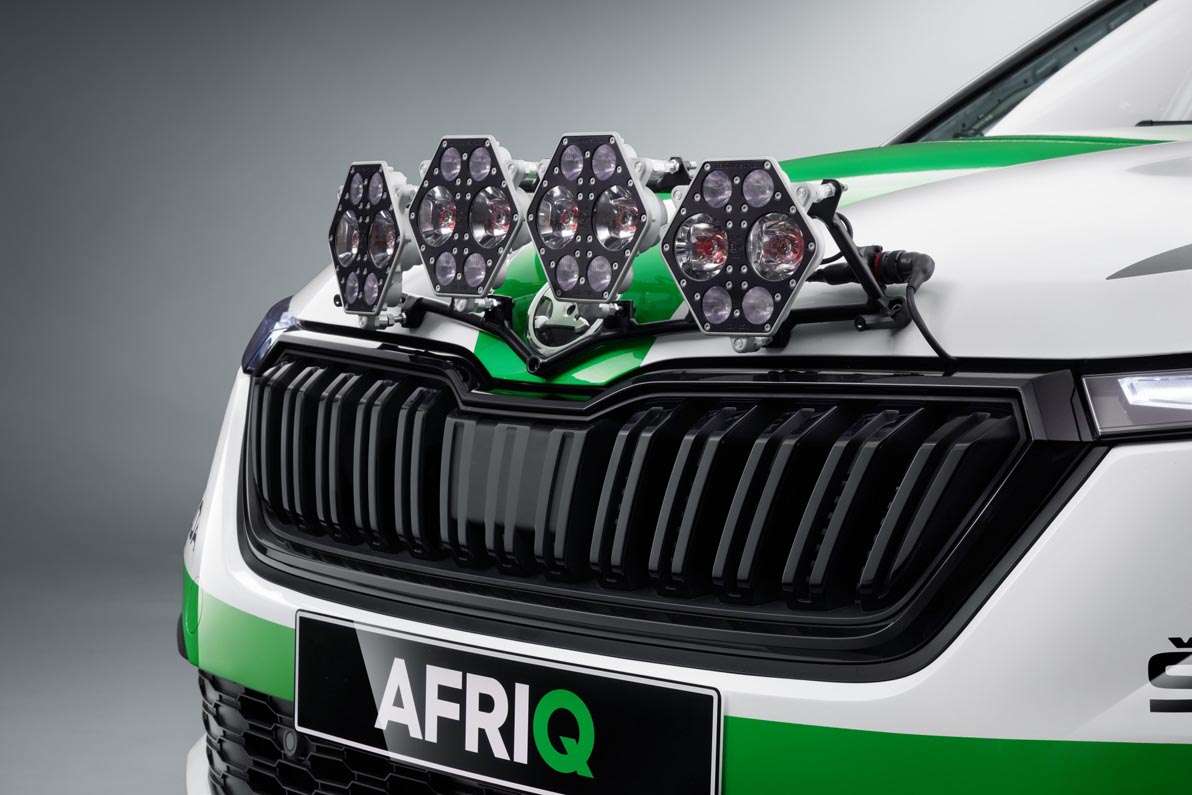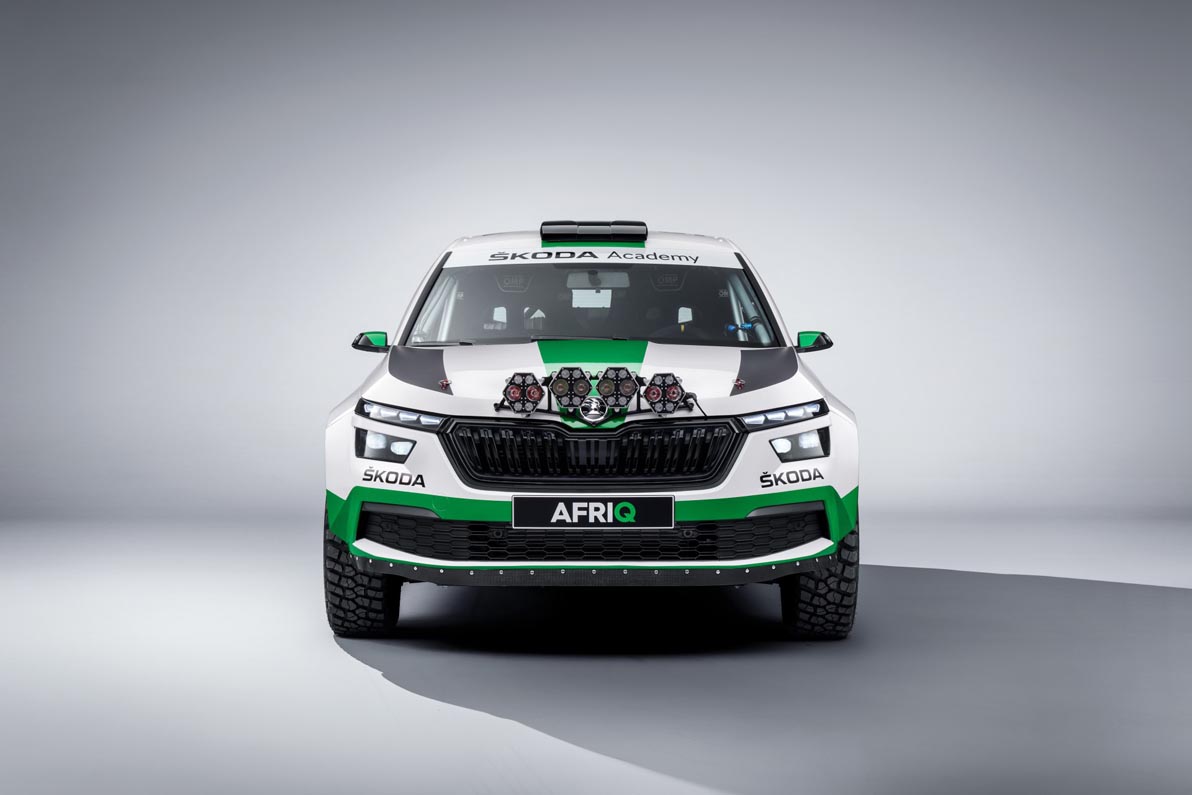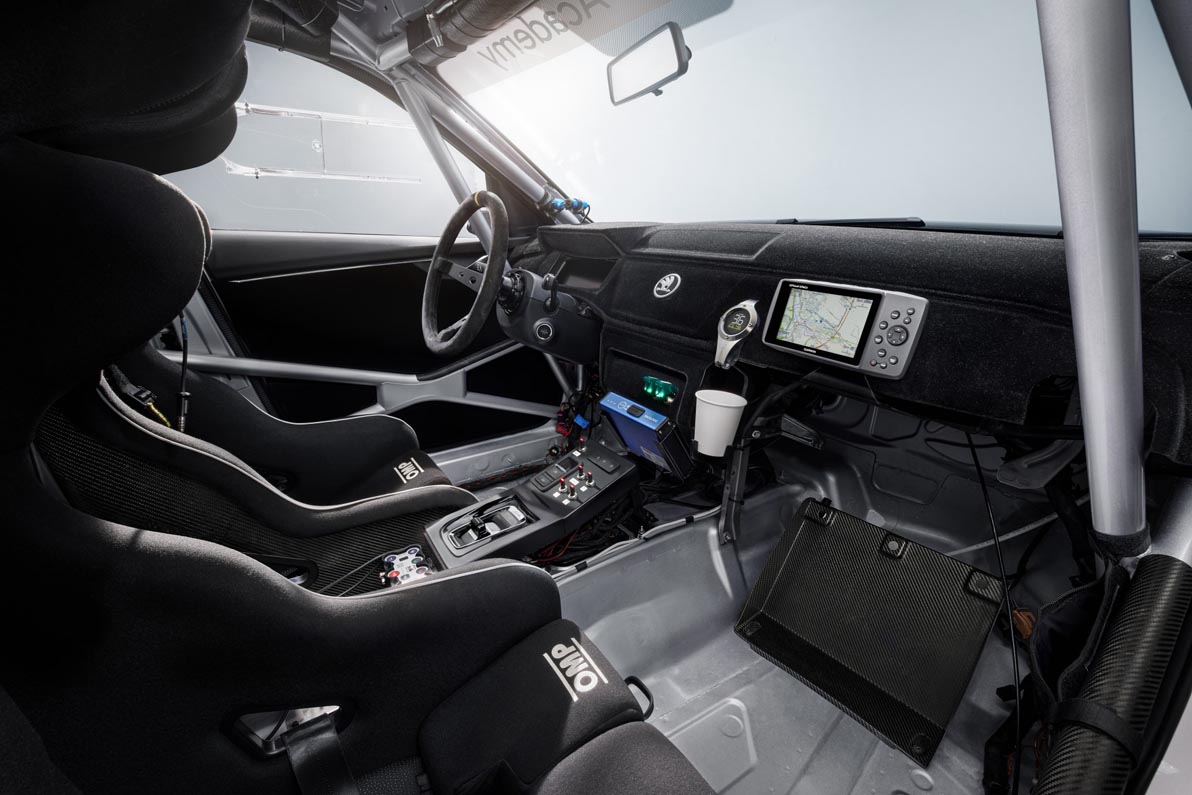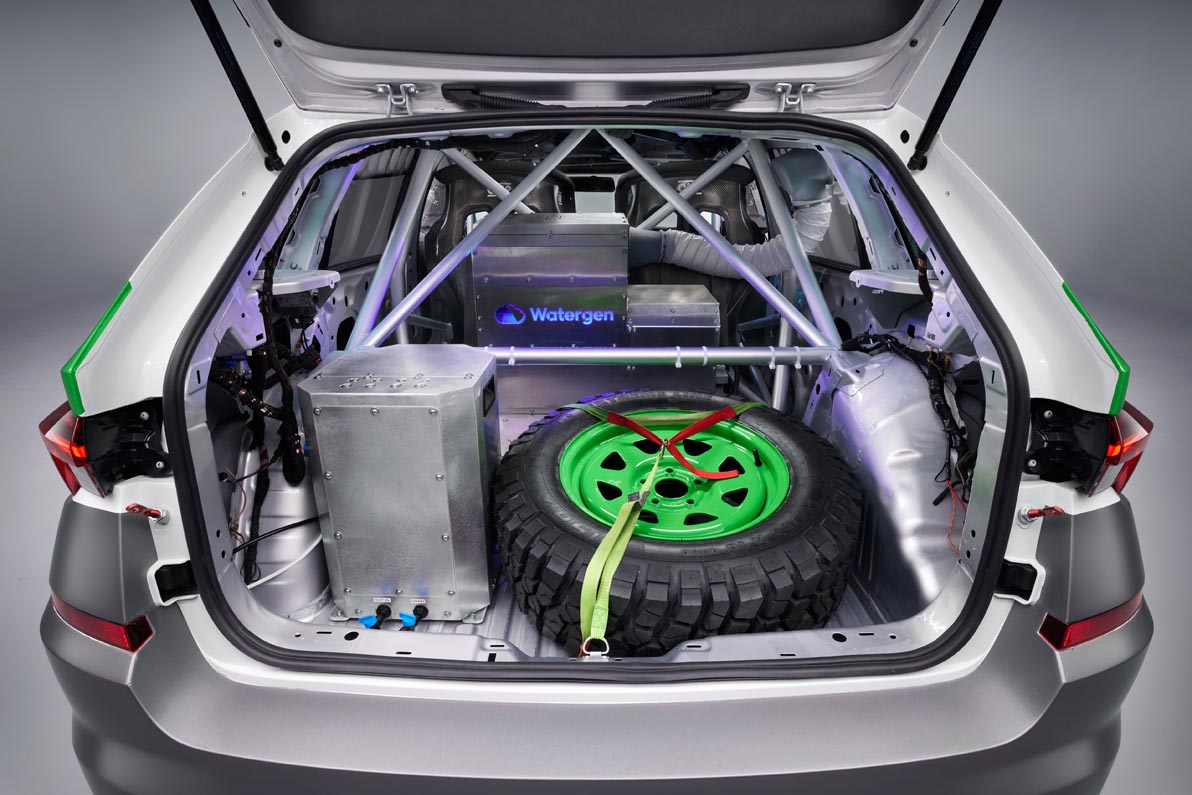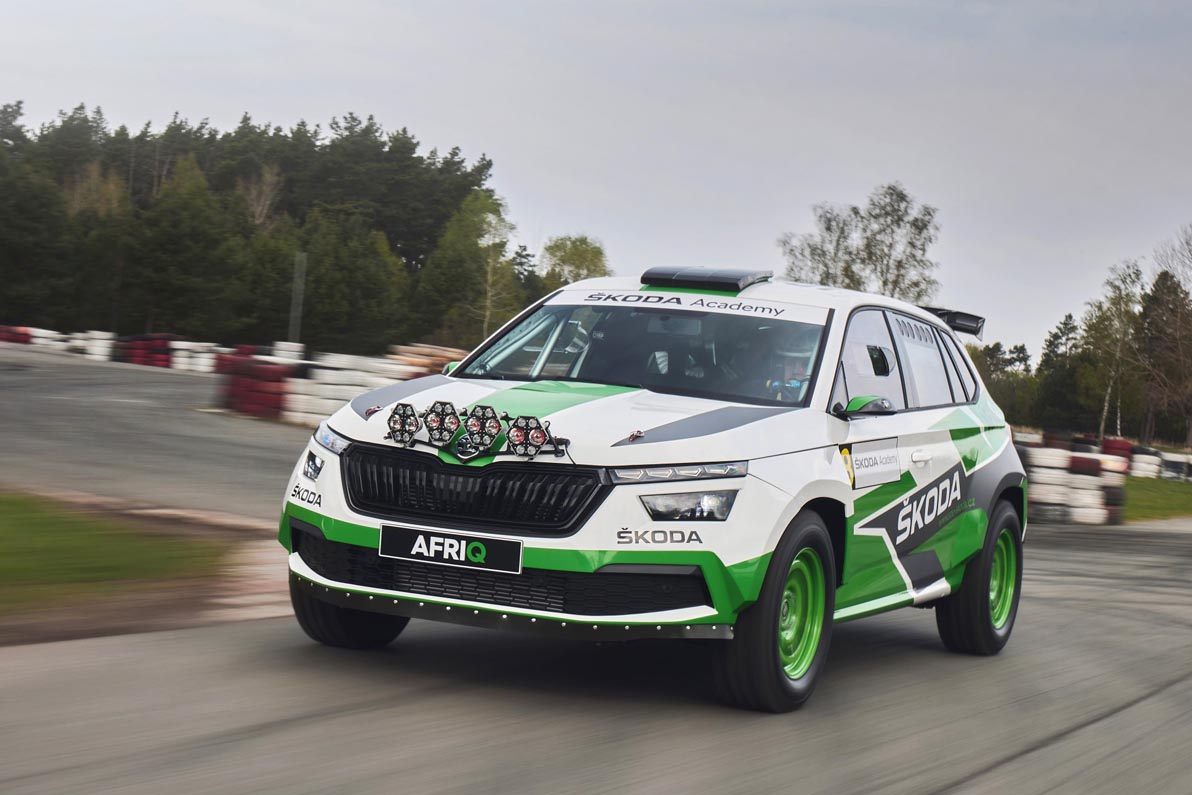
The eighth “student dream car” is a head-turning rally version of an urban SUV, the ŠKODA KAMIQ. This is the first time the ŠKODA KAMIQ has been chosen for modification by the students.
“When building their car, the students collaborate with experts from all areas of the company. Under the guidance of their teachers, they transform a ŠKODA production model into a concept car with many innovative ideas. During this project they learn a number of techniques that will later form part of their work. As it happens, the AFRIQ was the most collaborative of all the student specials to date, bringing together experts from ŠKODA Motorsport, the development department, ŠKODA Design and production. For some of these professionals, it was the first time they’d worked on a student,” says teacher Ivo Vollman, who leads the project.
And why the African theme? In addition to the reference to the famous Dakar Rally, the students wanted to highlight ŠKODA’s responsibility for all Volkswagen Group’s activities in North Africa.
Rally-inspired
It took four months to build the car, with the students spending about two thousand hours on the project. One of the reasons for the heavy workload was the extensive modifications to the bodywork of the basic ŠKODA KAMIQ: the students welded the urban SUV’s rear doors into the body, and the mudguards, wheel arches and bumpers of the now two-door AFRIQ were significantly enlarged. The suspension is stronger and the car’s ground clearance is much higher. Adding the all-wheel drive system from the ŠKODA OCTAVIA 4×4 also took up a lot of time.
Looks-wise, the students clearly drew inspiration from the ŠKODA FABIA Rally2 evo. So the AFRIQ too is painted white and fitted with numerous colourful stickers in the classic racing style. The pupils came up with the decals themselves in cooperation with ŠKODA Design. The sporty and robust look is emphasised by the 15-inch OZ Racing wheels.
As already mentioned, unlike the ŠKODA KAMIQ it’s based on, the AFRIQ is a two-door car. To stiffen the body, the students welded the rear doors directly onto a specially designed safety cage in the interior. Echoing the ŠKODA FABIA Rally2 evo, there is a “scoop” on the roof, and the rear roof spoiler also comes from the successful competition car. The additional headlights at the front and special quick-release fasteners on the bonnet and boot are also standard features in the rally world.
Higher, lighter, powerful
The ŠKODA AFRIQ is 4,362 millimetres long, 1,793 millimetres wide and 1,410 millimetres high. The wheelbase is 2,649 millimetres and the ground clearance is 180 millimetres. Changes to the chassis were necessitated by changes to the powertrain: this, including the engine and transmission, is taken wholesale from the ŠKODA OCTAVIA 4×4. The four-cylinder 2.0 TSI engine has an output of 140 kW (190 hp) and transmits maximum torque of 320 Nm to all four wheels via a seven-speed DSG gearbox. The exhaust system has also been adapted to the new engine and revised chassis.
Although the drivetrain from the OCTAVIA, including the all-wheel drive, is heavier than the corresponding components of the standard KAMIQ – plus the protective safety frame inside – the students managed to make the AFRIQ approximately 100 kilograms lighter than the KAMIQ. The chassis, which has been modified for off-road driving, also makes the ŠKODA AFRIQ slightly taller. With the same body width and almost identical wheelbase, the student prototype is roughly 100 millimetres longer.
Water out of air
For the first time, an innovative device for extracting drinking water from the surrounding air can be found in a ŠKODA. The driver and co-driver in the AFRIQ thus have access to cooled and filtered drinking water at all times, regardless of the environment the car is being driven in.
And how does the system actually work? The device, draws in air from the atmosphere and filters out dust and impurities. This purified air then goes through the GENius heat exchange and cooling process, where it condenses into water. In the third step, the recovered water passes through a cascade filter that purifies it again and mineralises it. In this process, UV light destroys microorganisms and breaks down harmful chemicals. The treated water is stored in a tank at 5°C and is further exposed to UV light to destroy viruses and bacteria.
For the ŠKODA AFRIQ, a tailor-made solution was assembled from existing Watergen building blocks. The tank is located on the left side of the rear door in the same box as the water filtration, mineralisation and UV purification. The cup holder, spout and display are connected and located on the dashboard within easy reach of the navigator. Water flows under the display into a cup located in the holder. The display shows the current level in the water tank and the temperature and humidity of the air the water is produced from. The main unit with fan and air filter, GENius heat exchanger, condenser and compressor is located behind the two sports seats in the rear of the AFRIQ. It is here that air is drawn in, cooled and condensed into water. The system is fully integrated into the vehicle design and can produce up to 20 litres of potable water per day, depending on the external conditions such as temperature and humidity.
Pared-down interior
The students took a metaphorical axe to the interior, which is pared down like in all rally cars. There are special racing shell seats and six-point seatbelts, and the steering wheel and dashboard are from the ŠKODA FABIA Rally2 evo. The AFRIQ is also equipped with a fire extinguishing system for the crew’s safety.
In-car features include an outdoor navigation system, including a kilometre counter, that allows the use of rally navigation. Two cameras with microphones are installed to record the drive, and these store the footage on memory cards. One camera is positioned on the ceiling between the seats, the other on the left-hand A-pillar above the dashboard.
